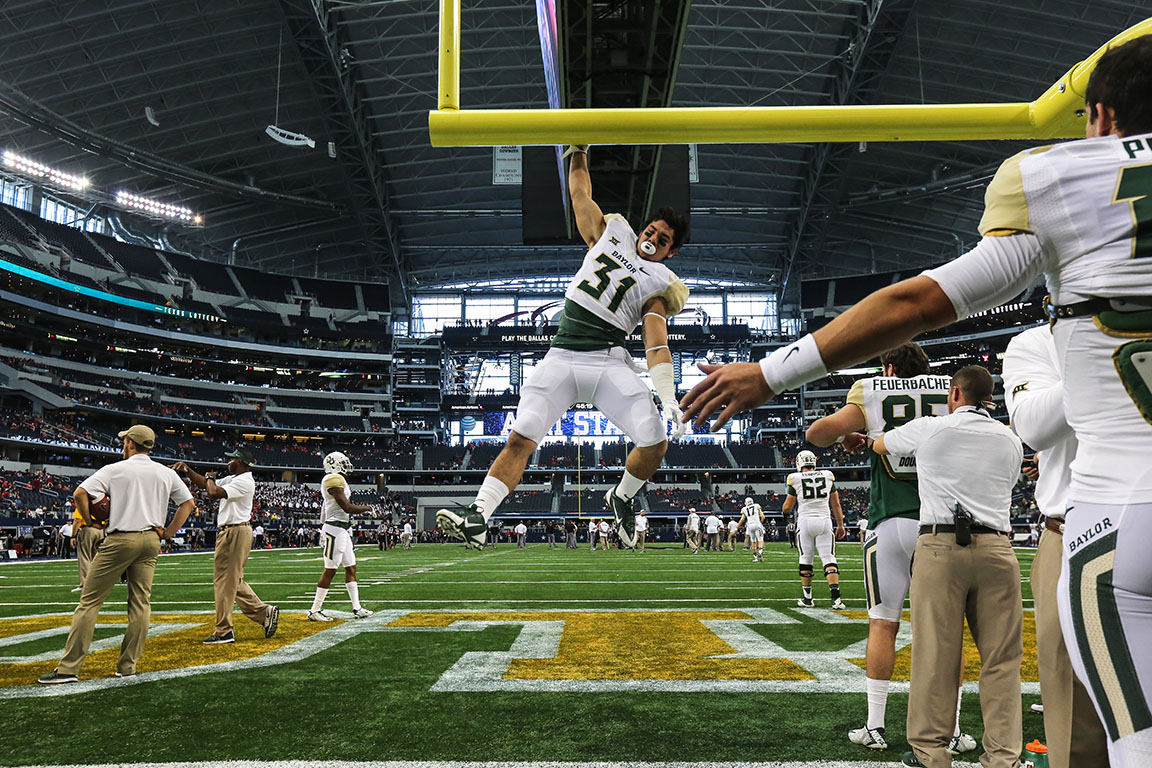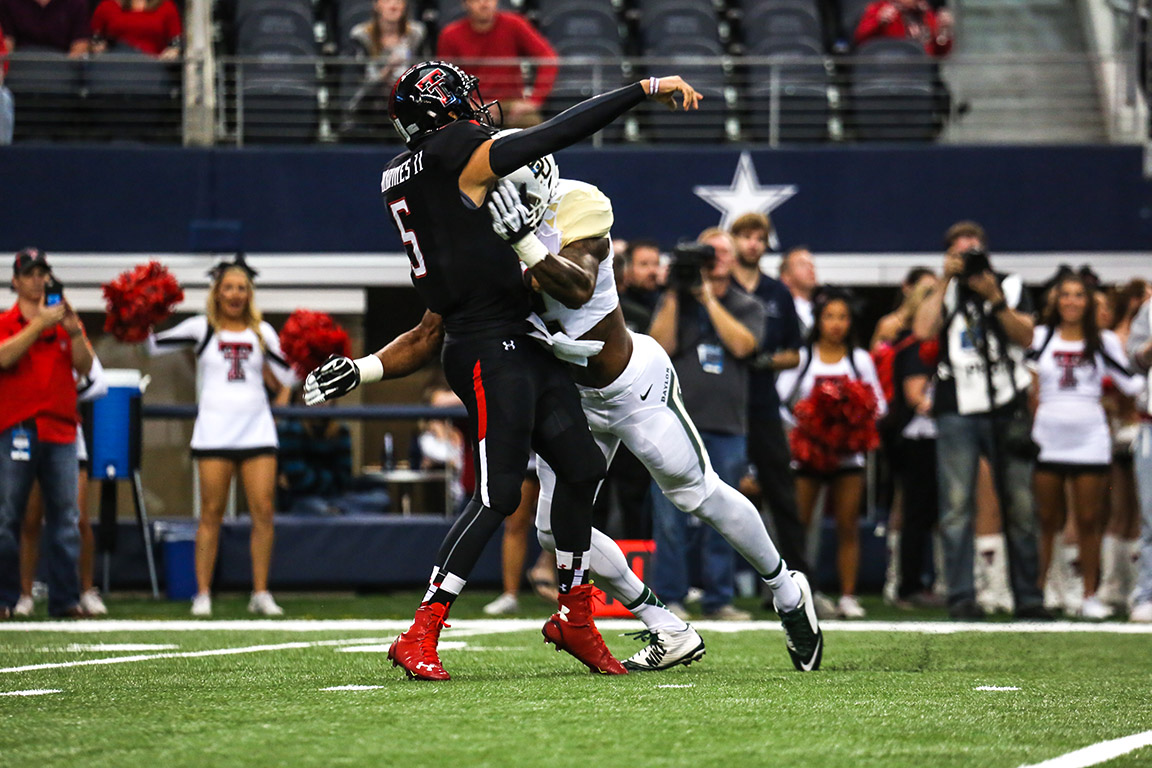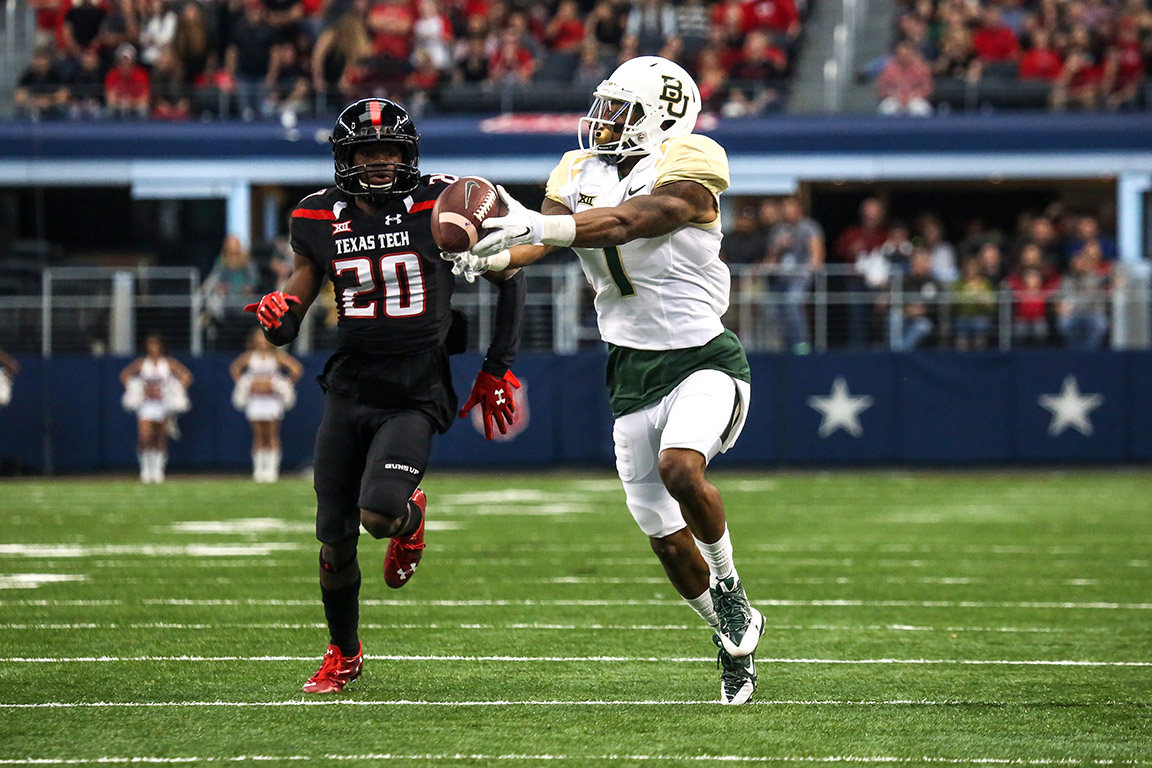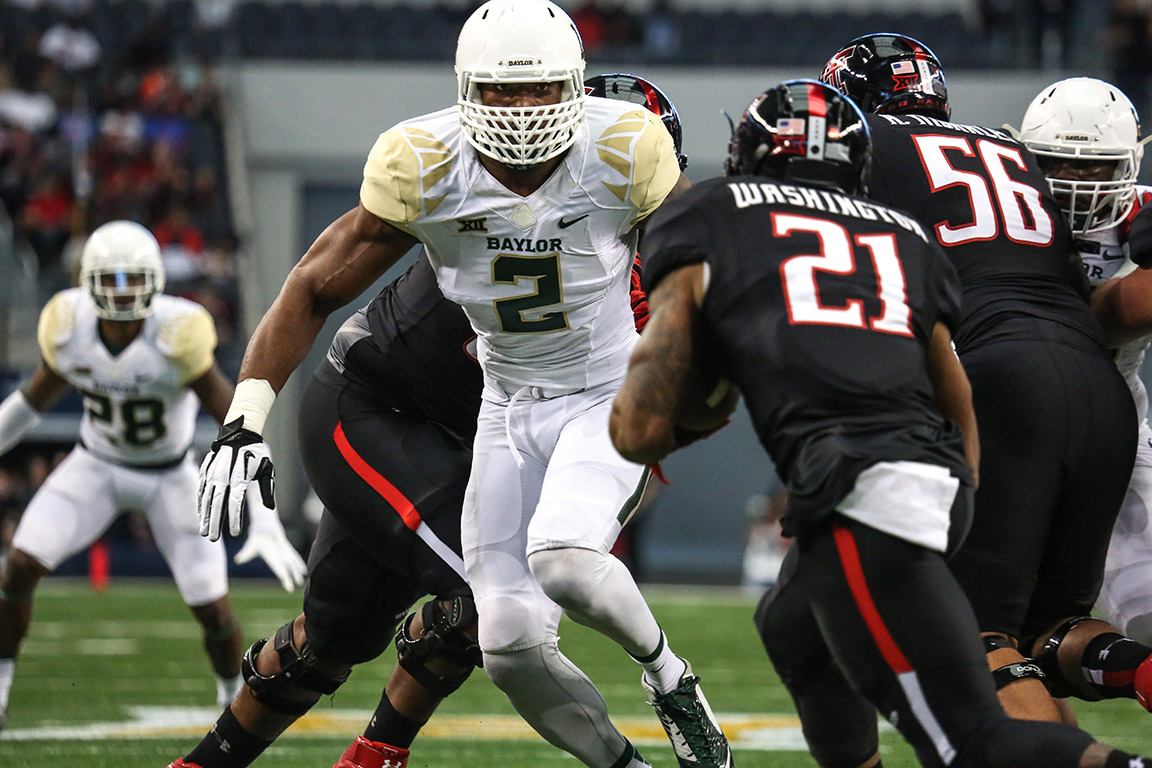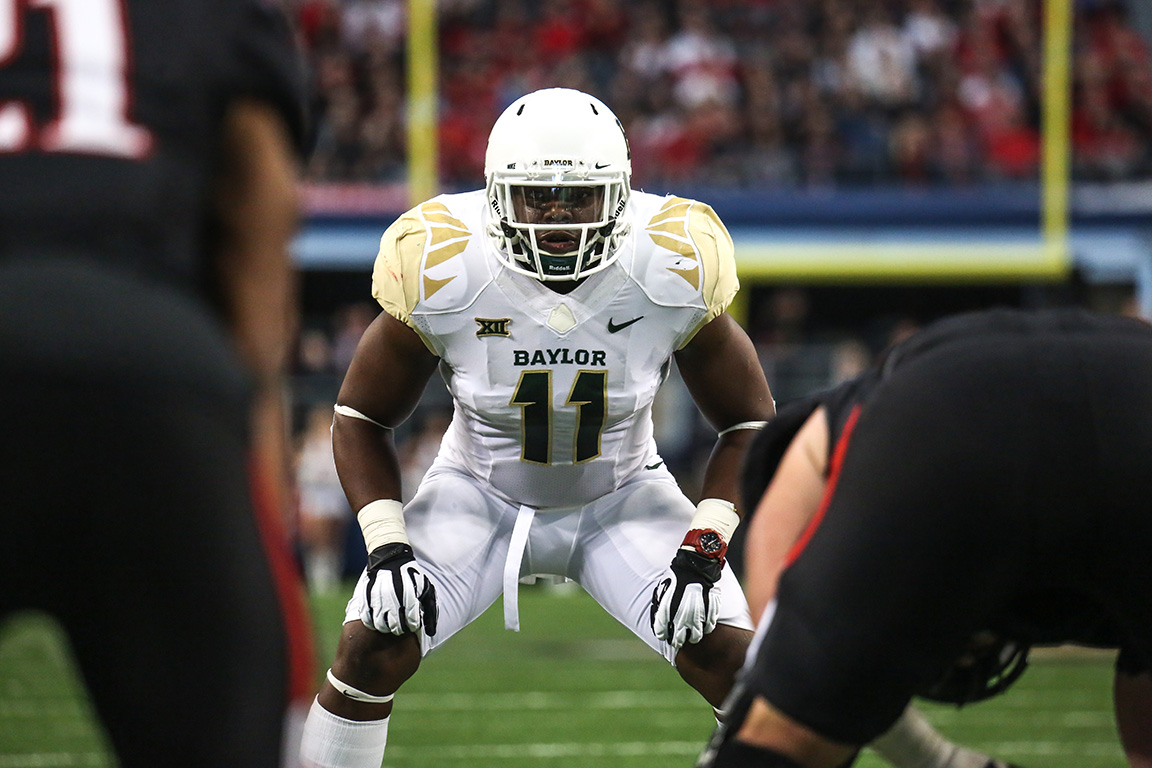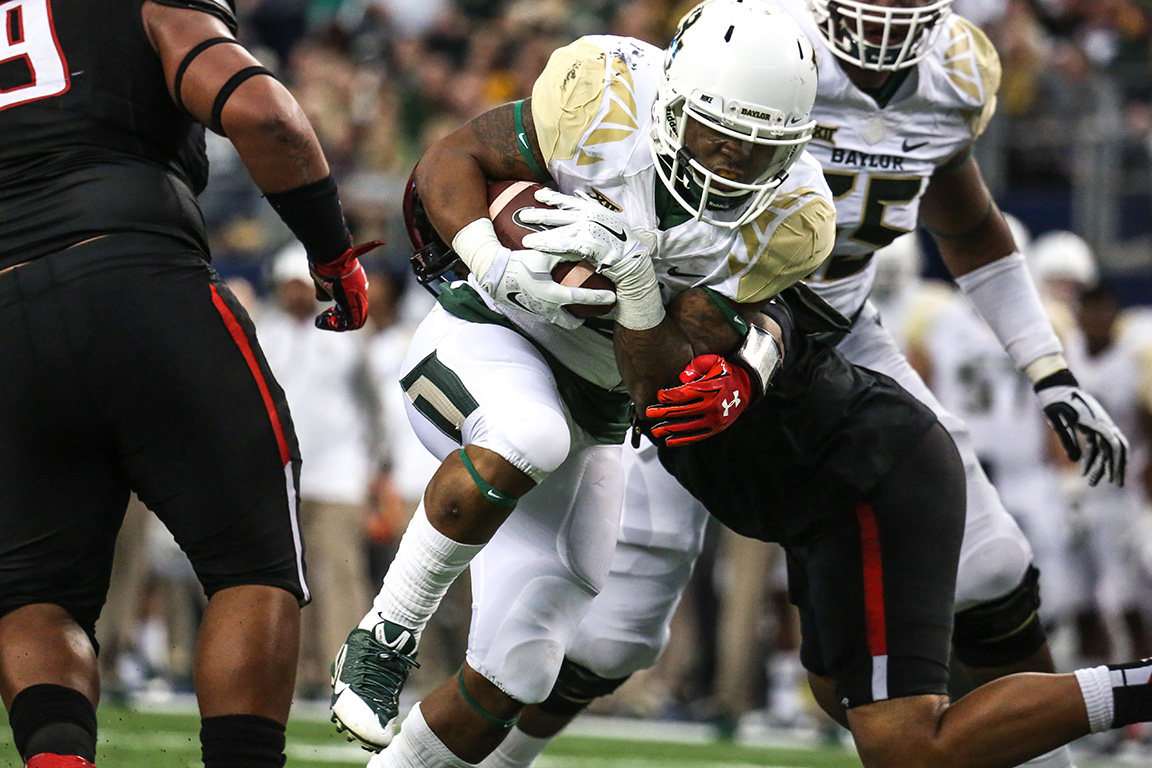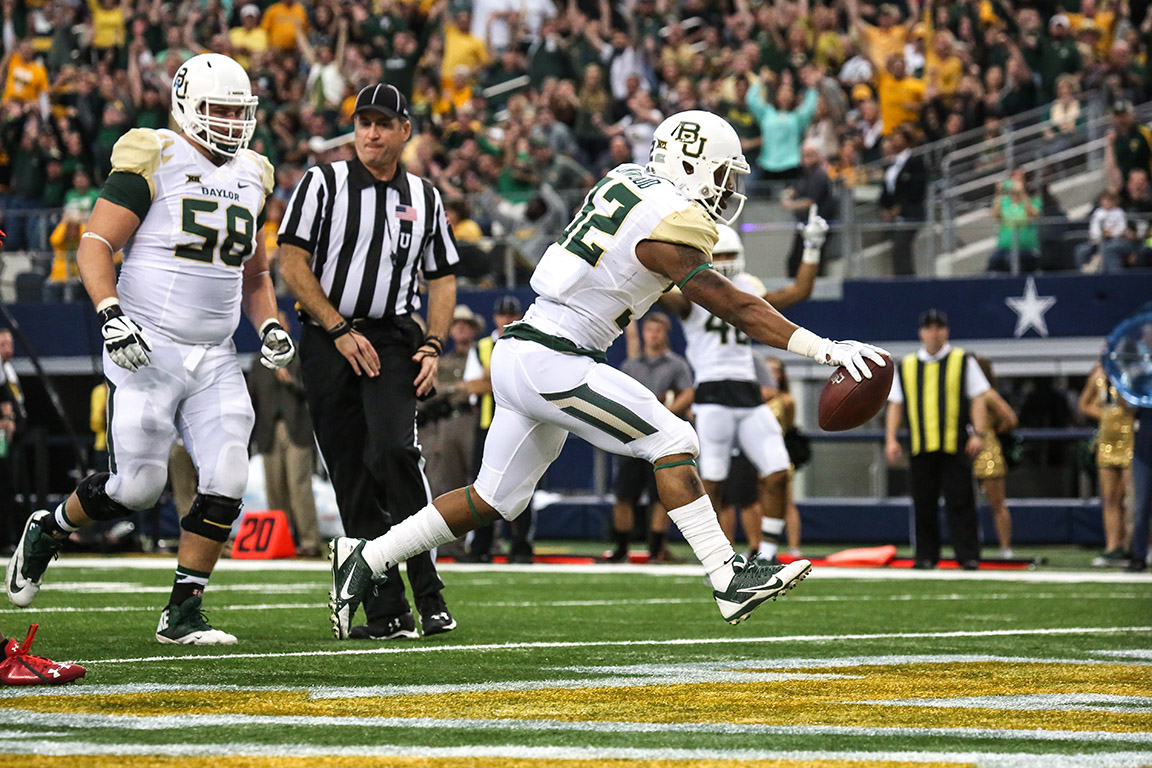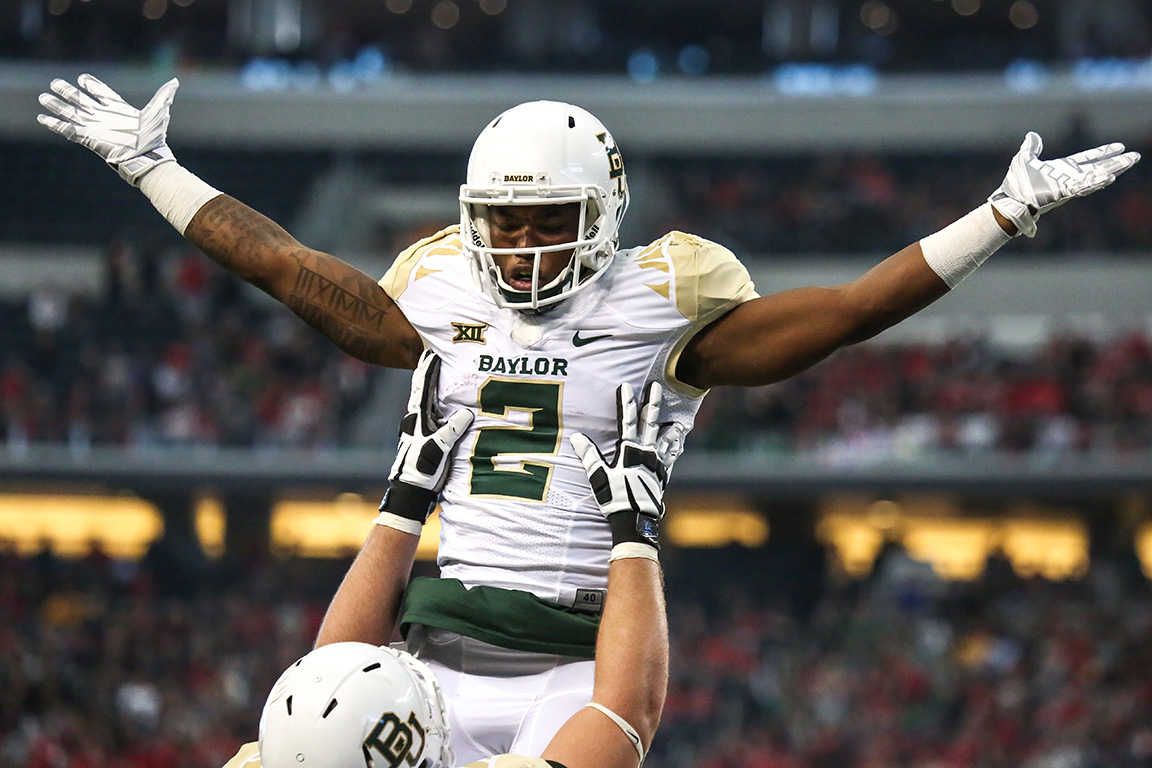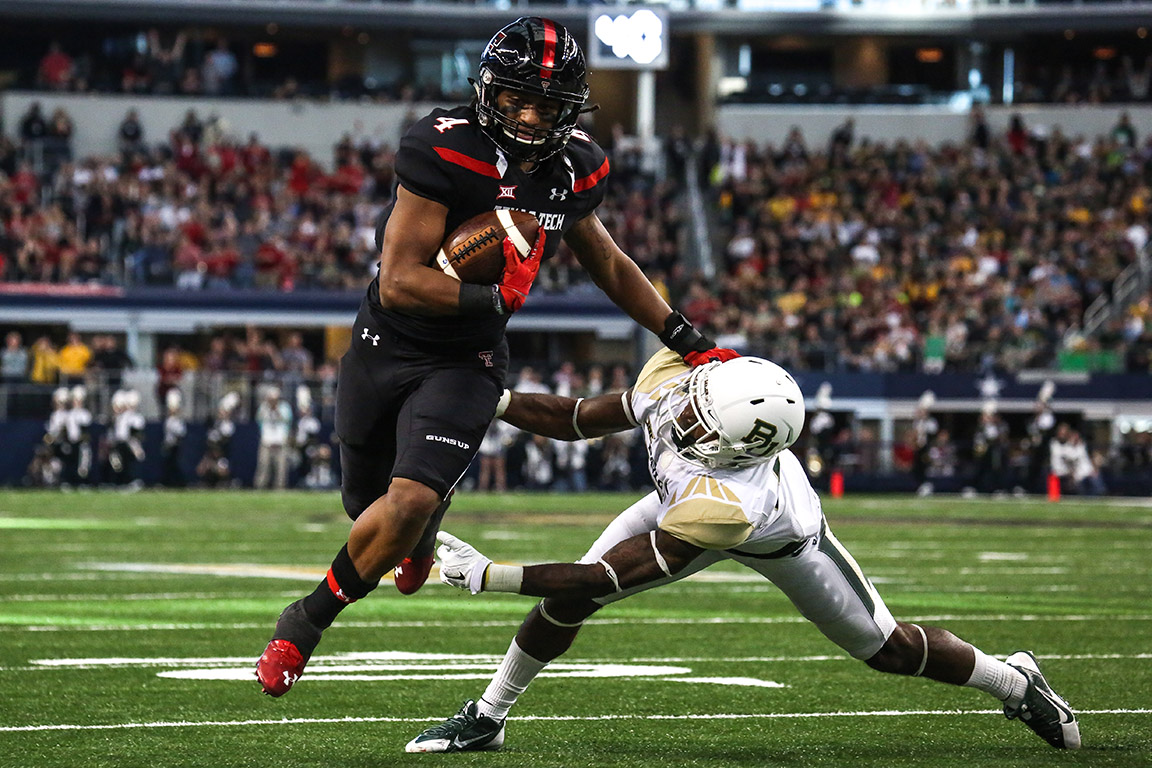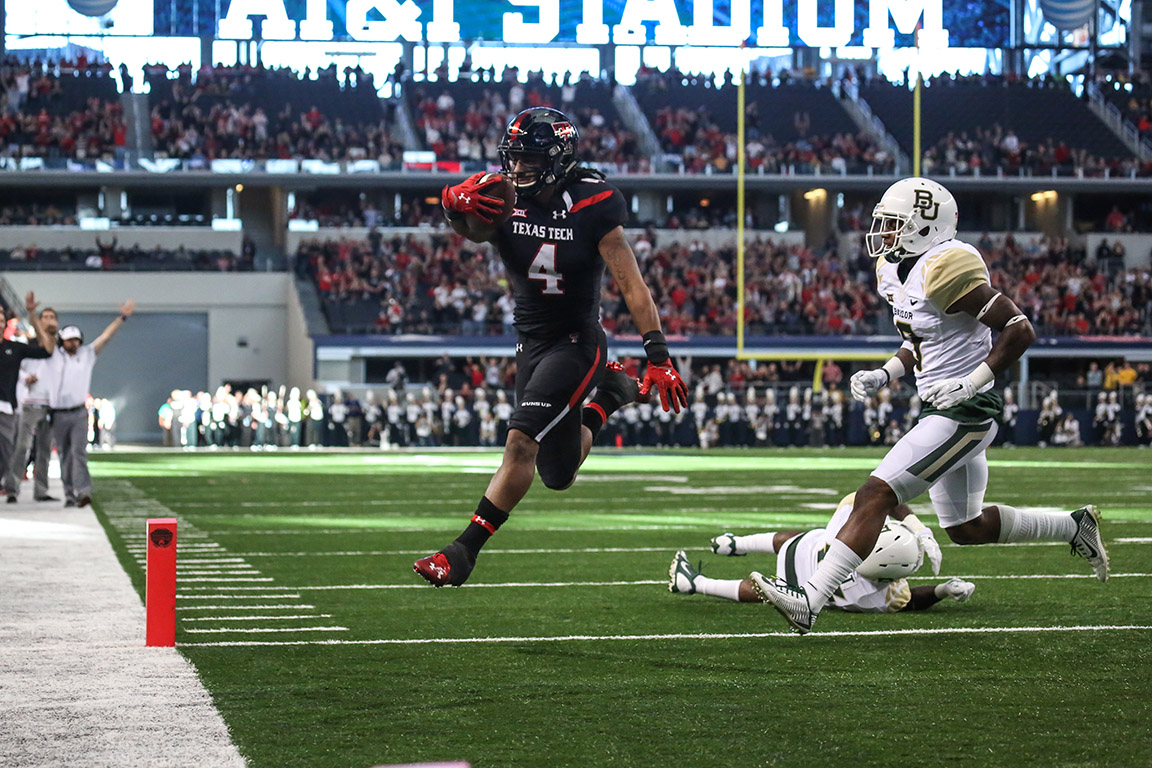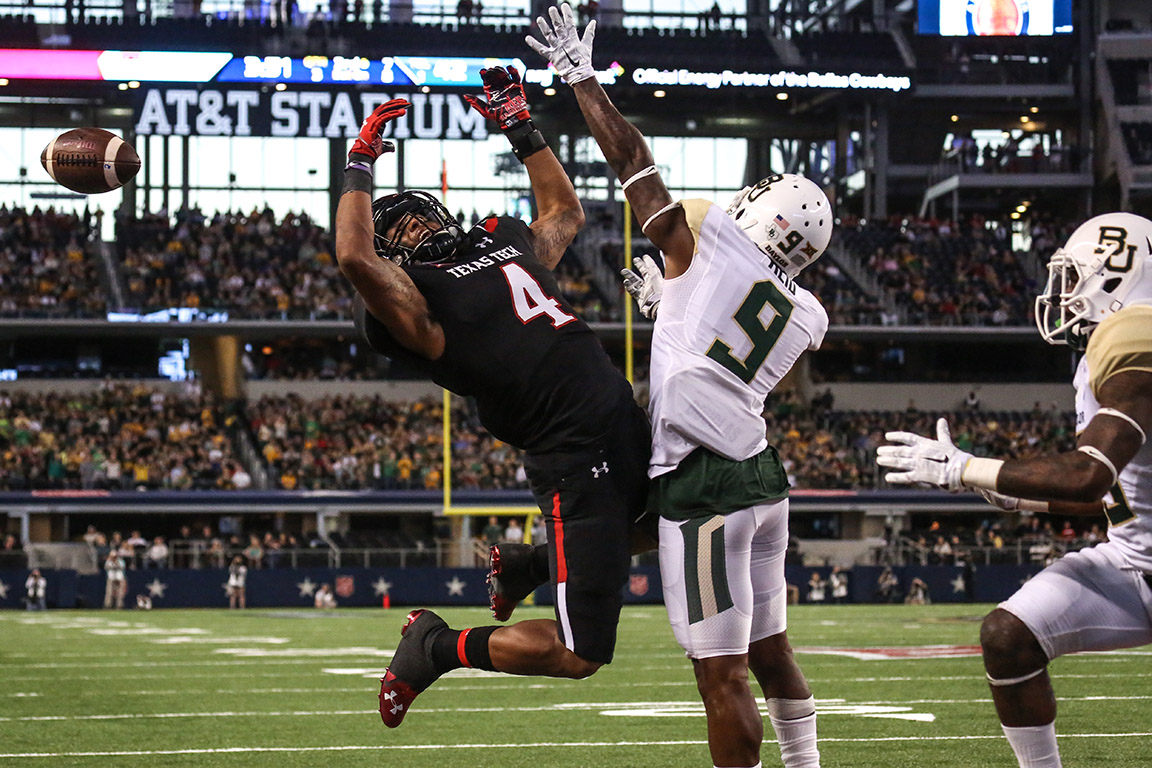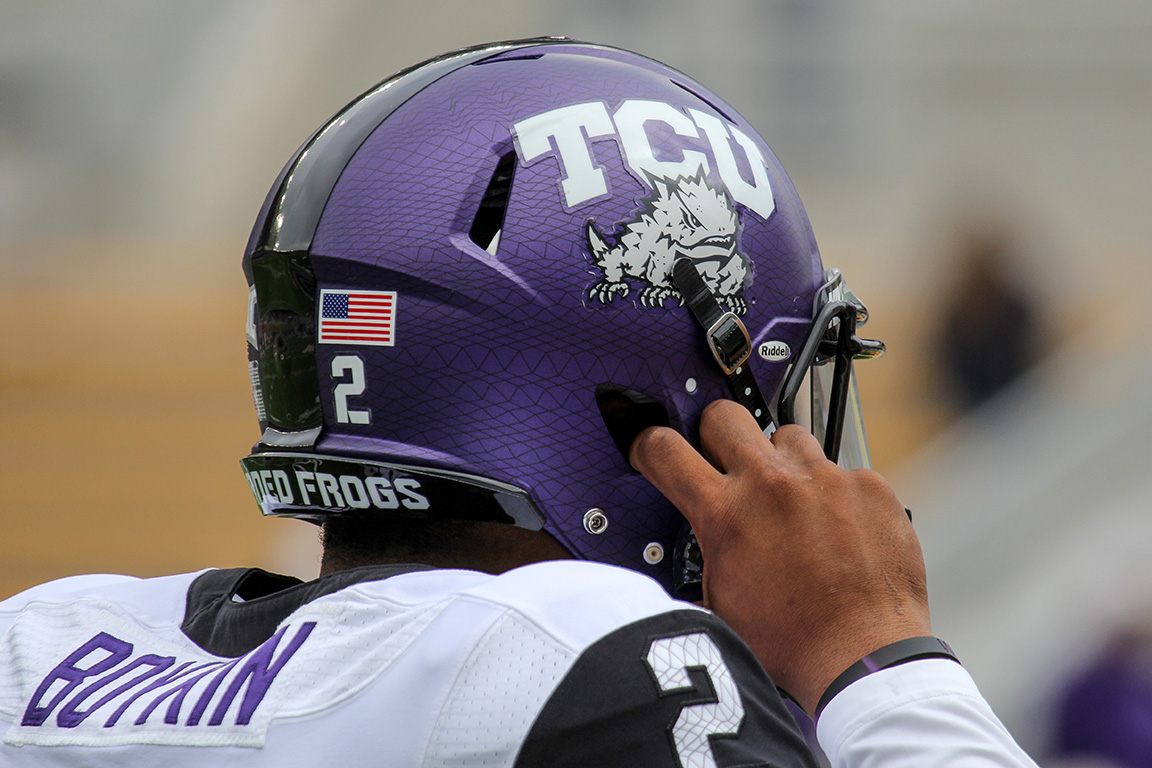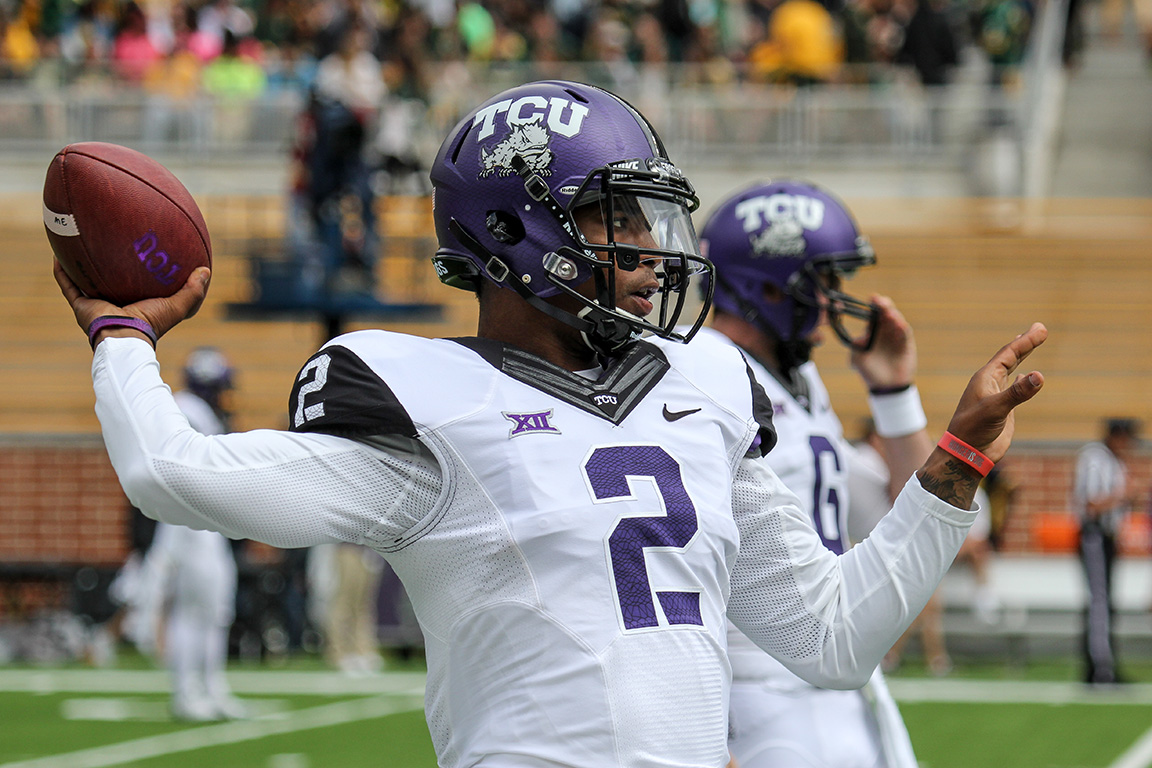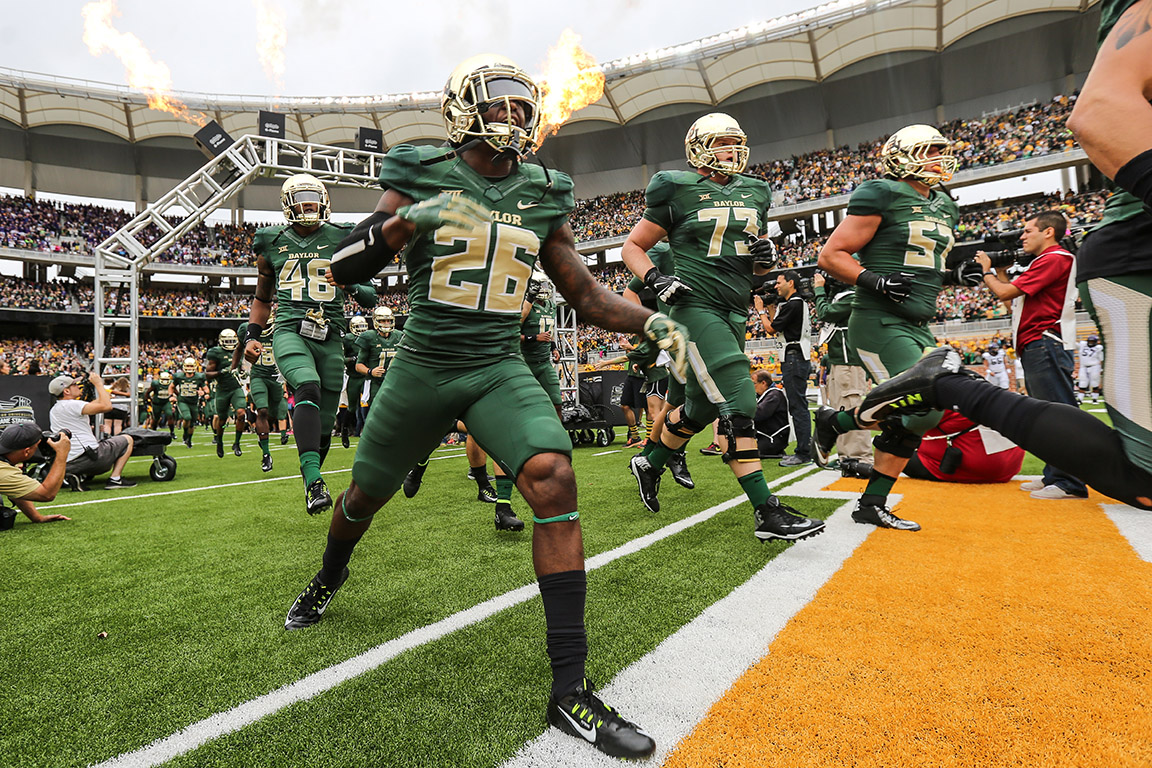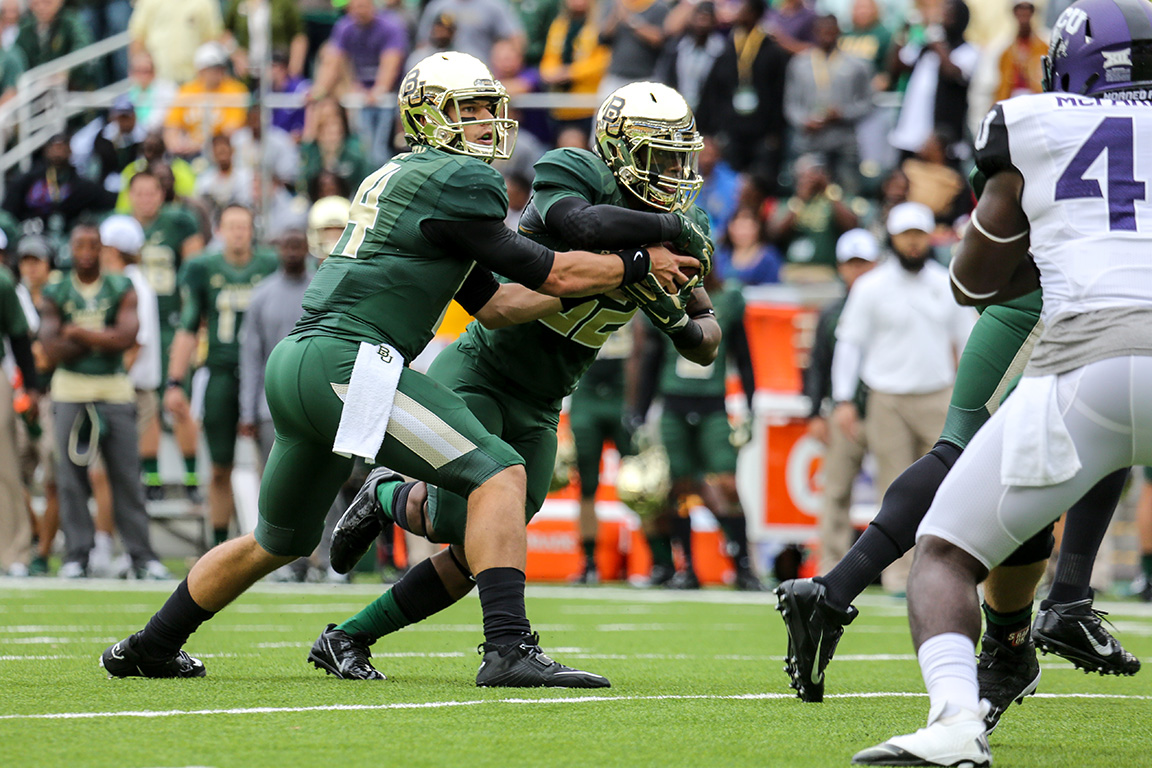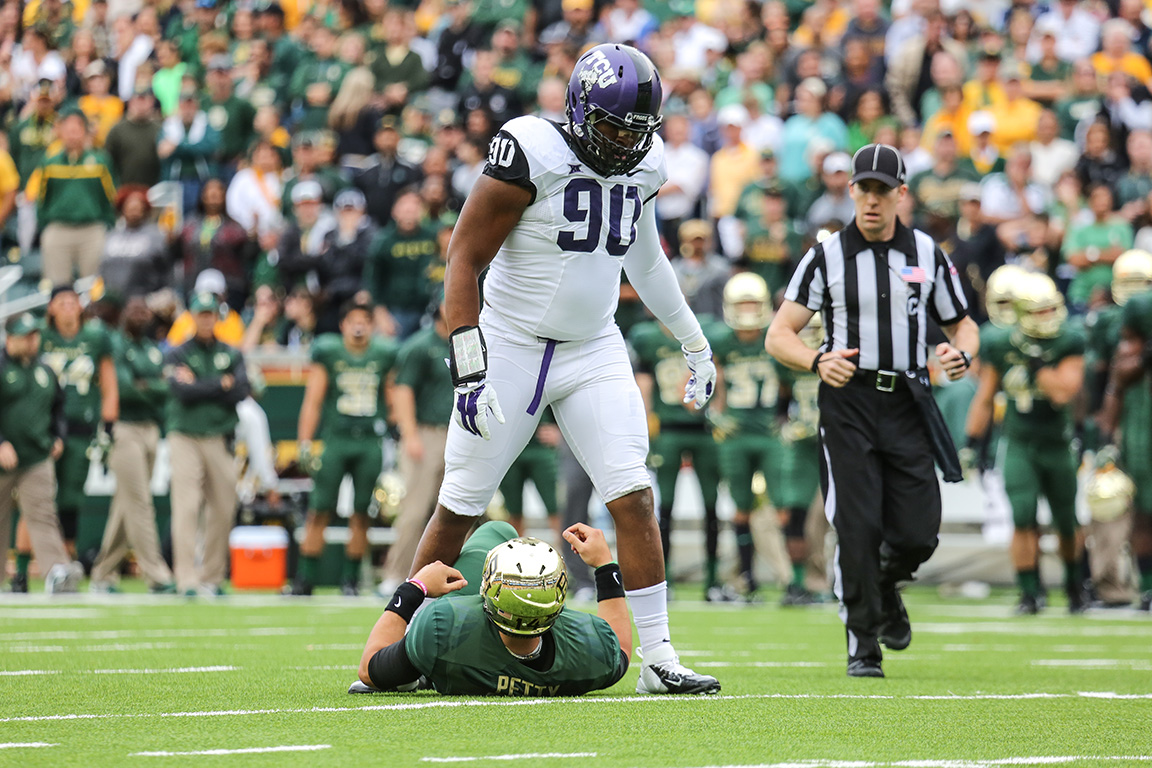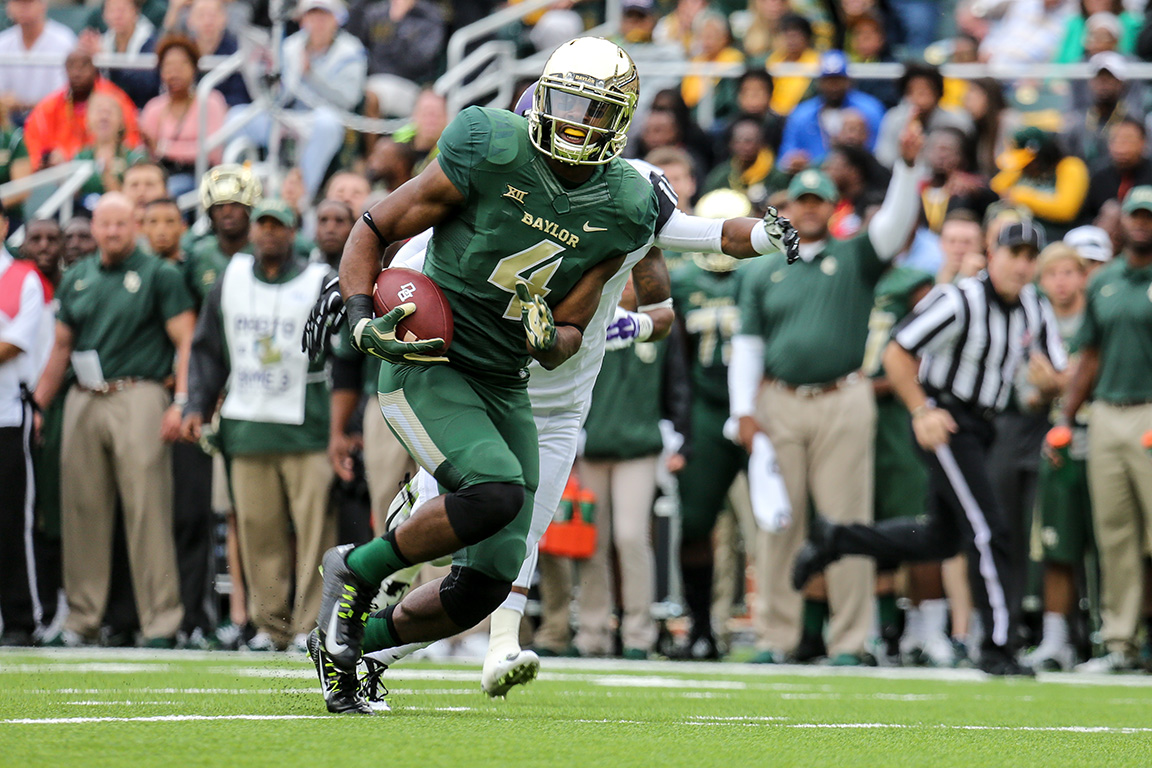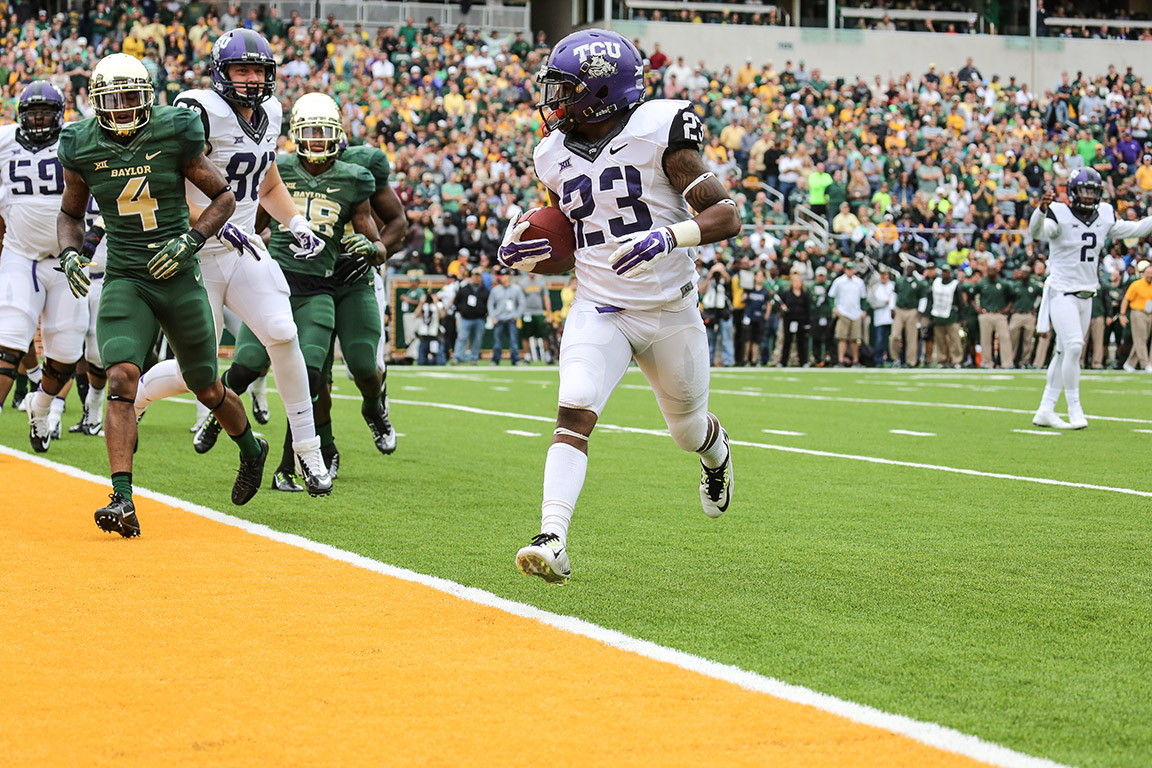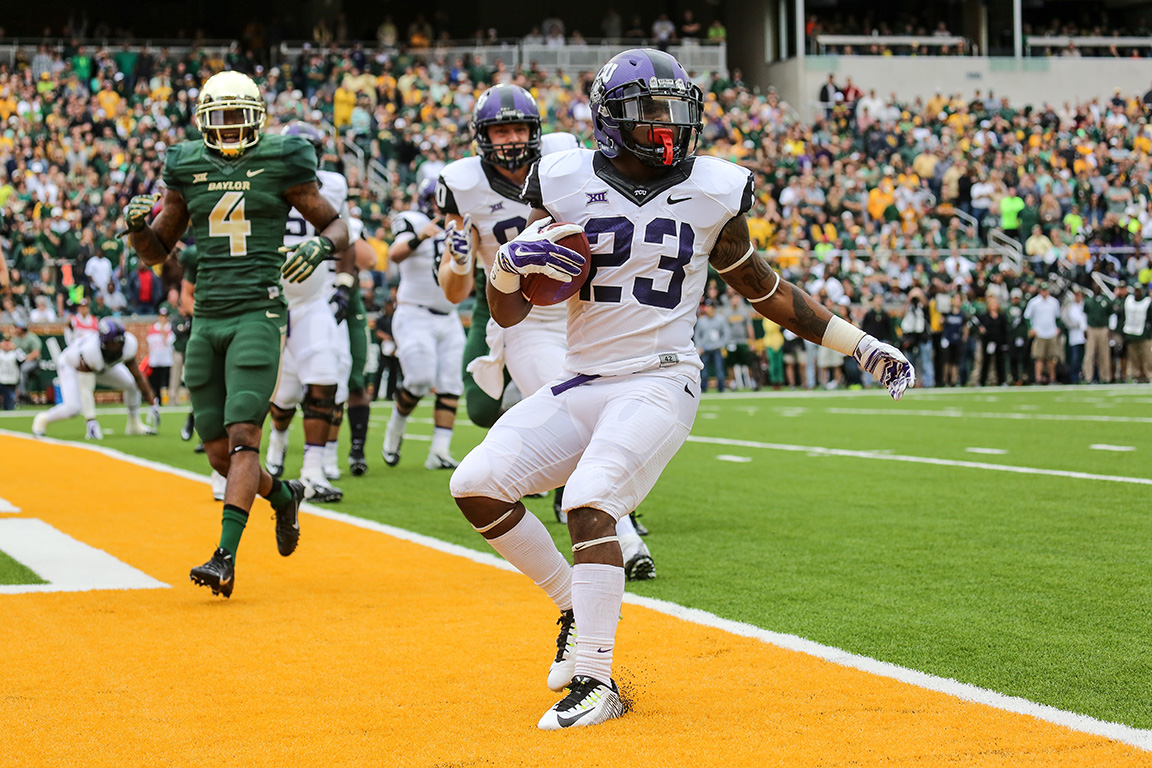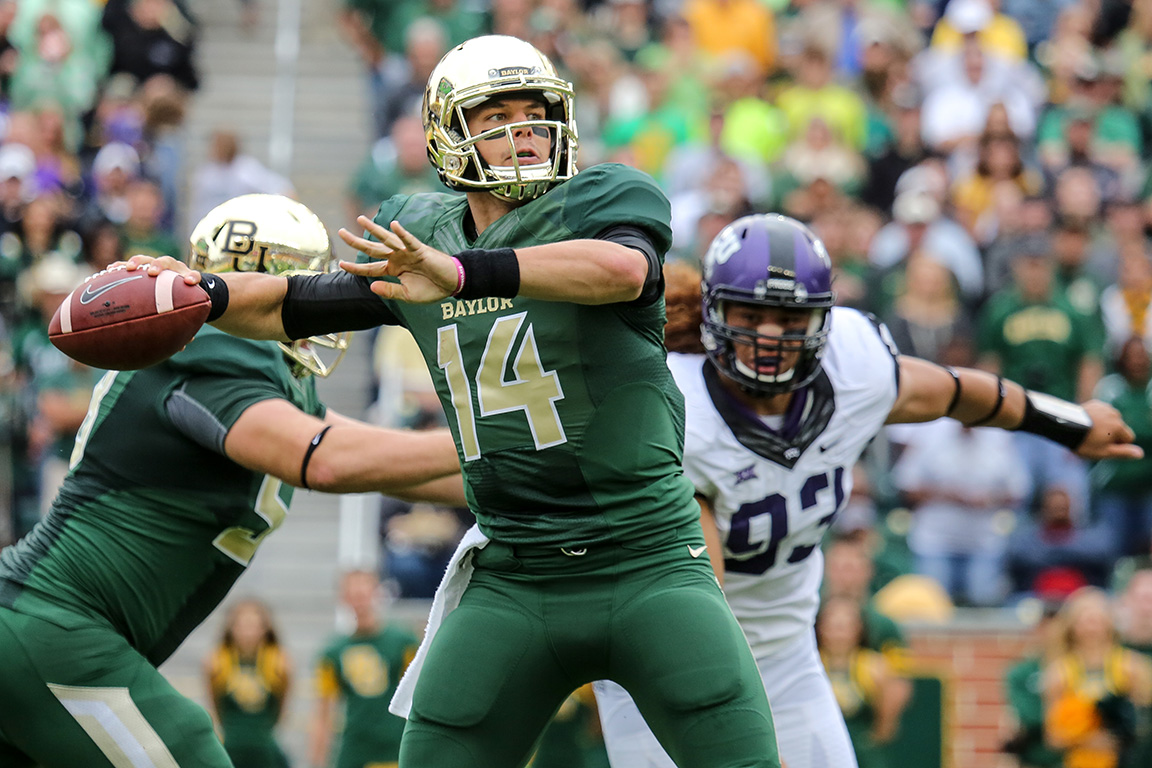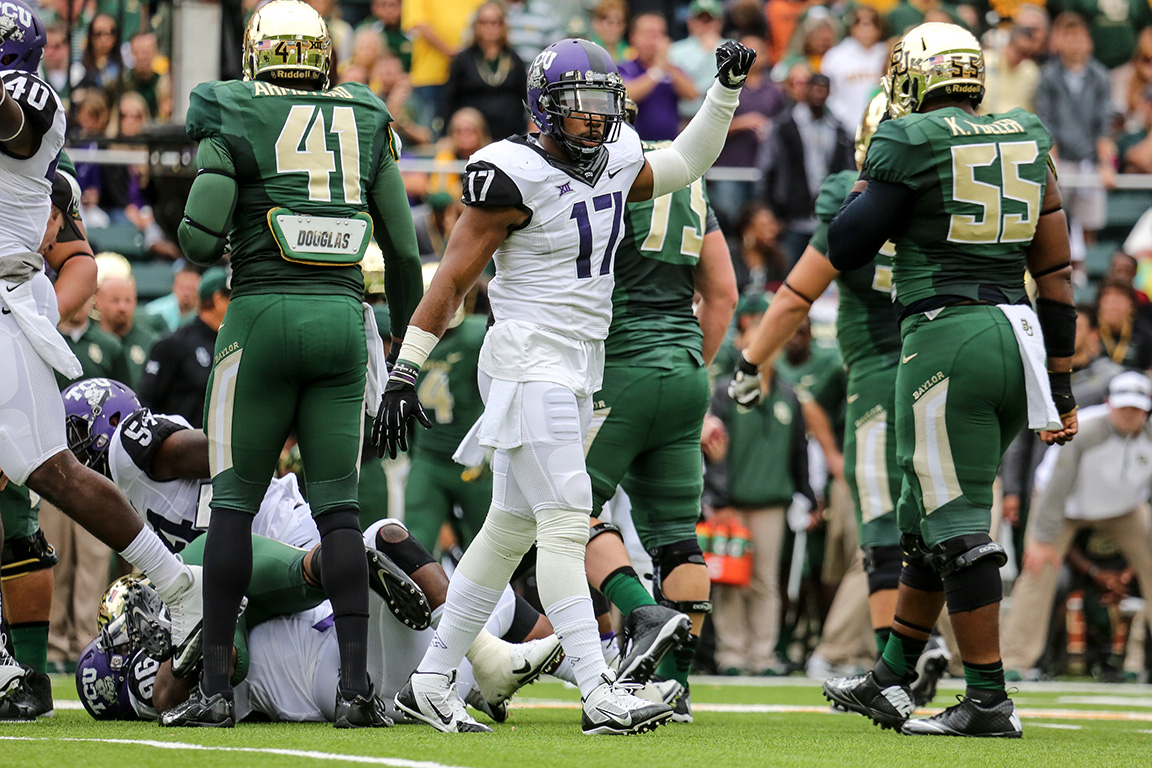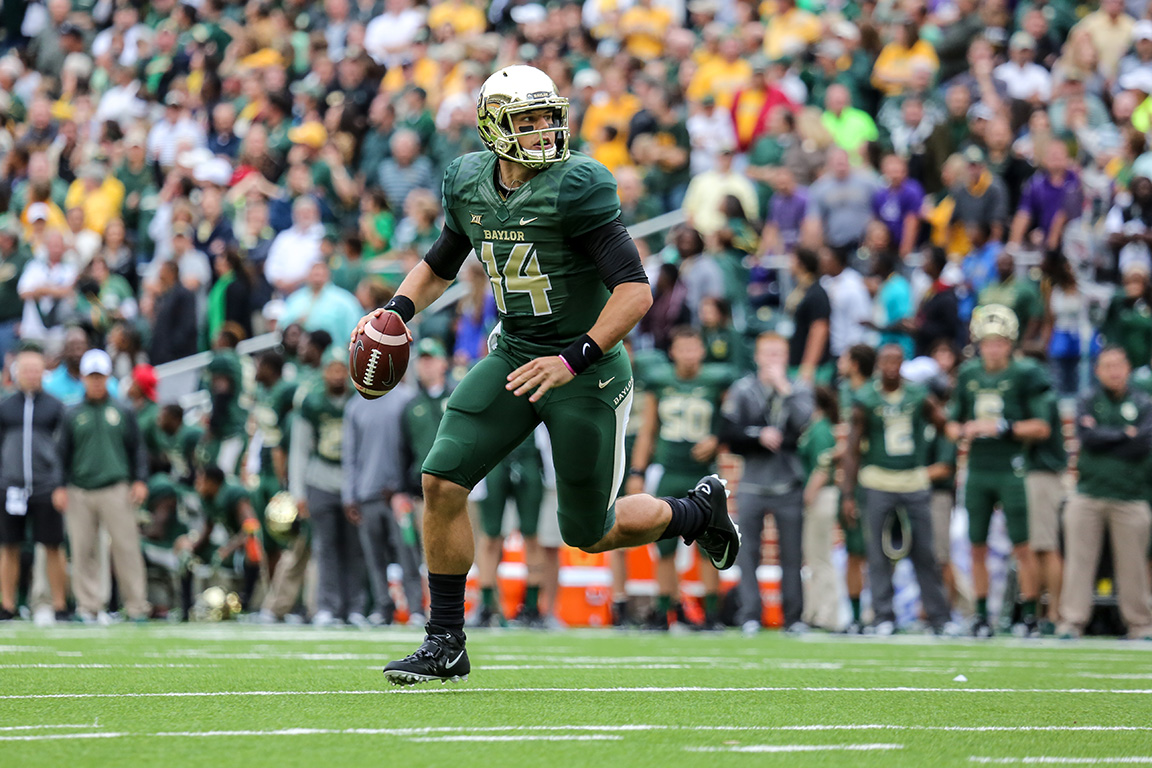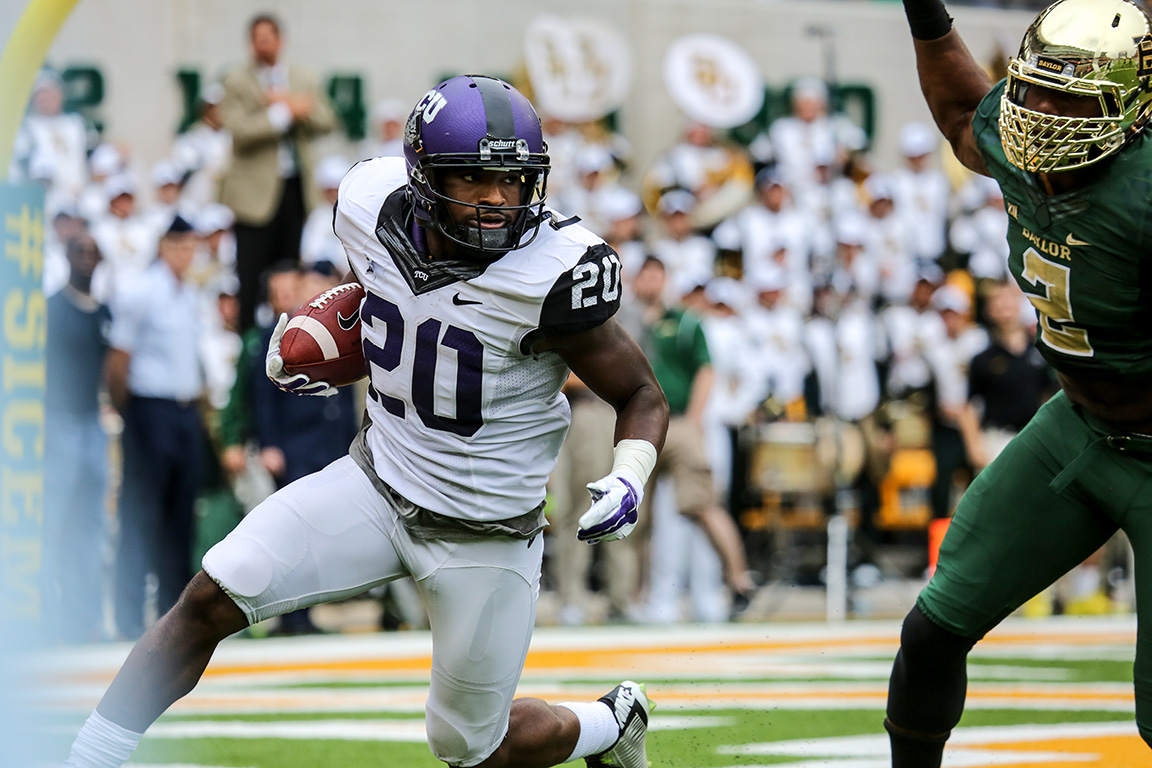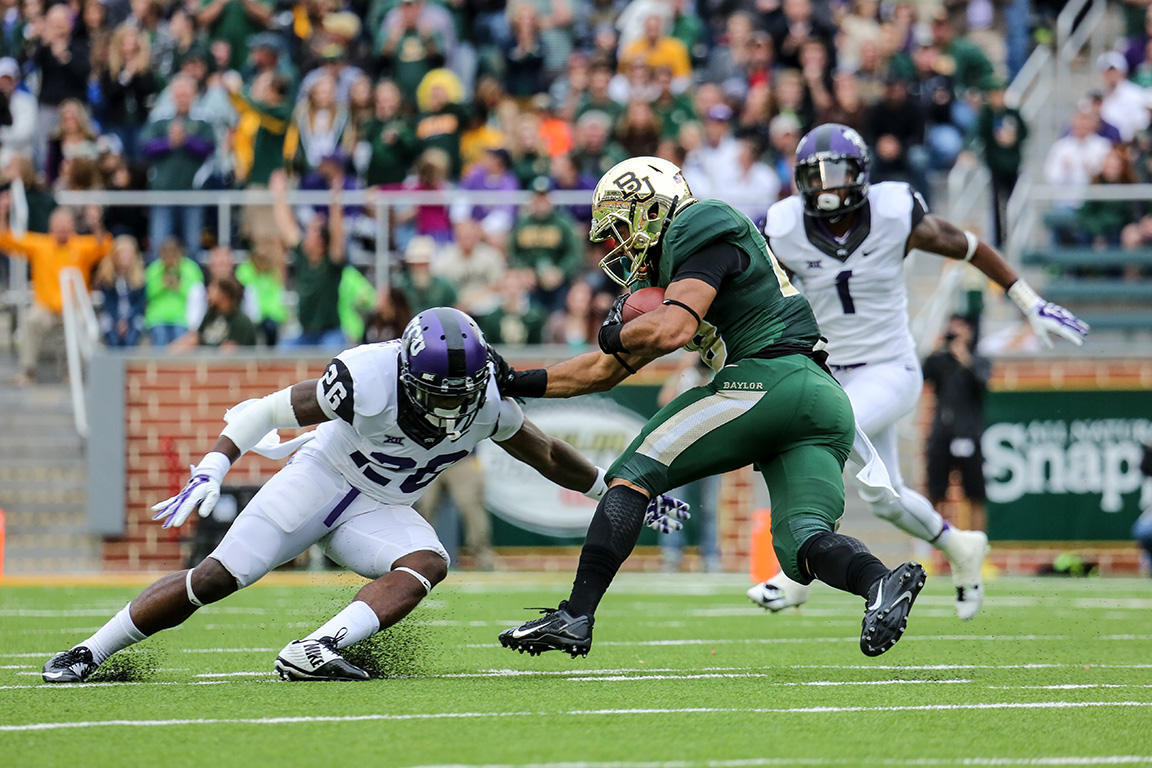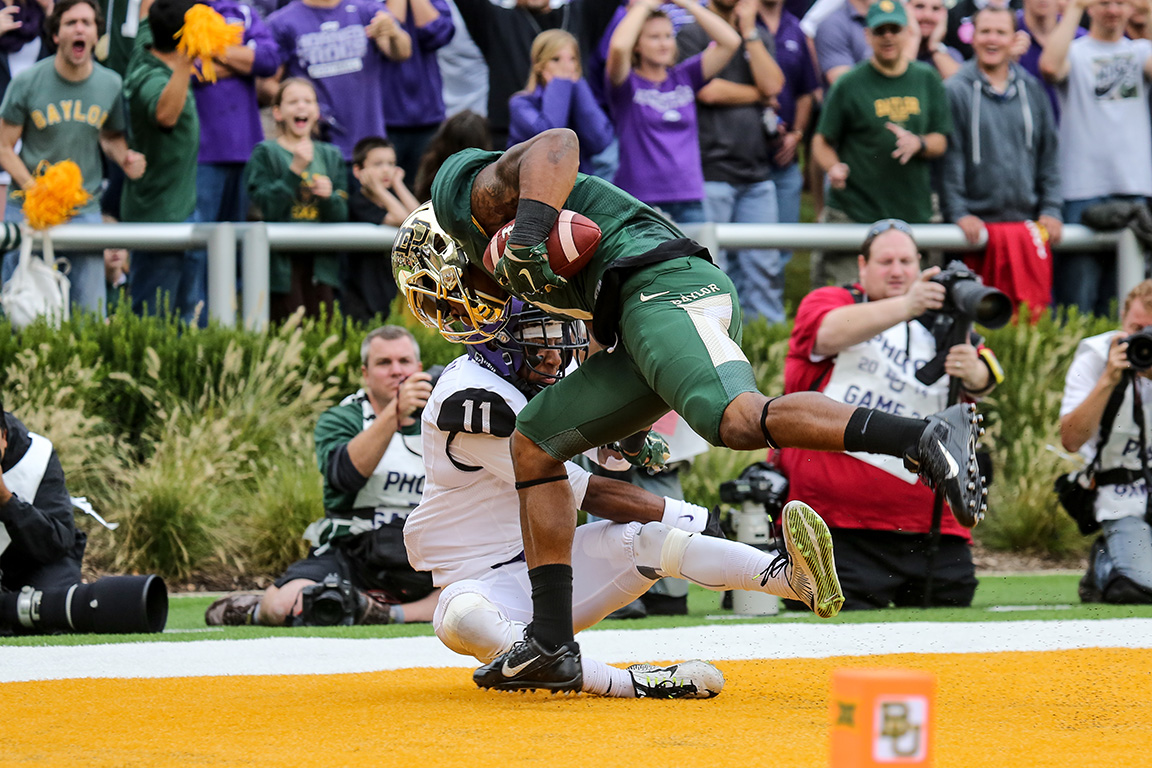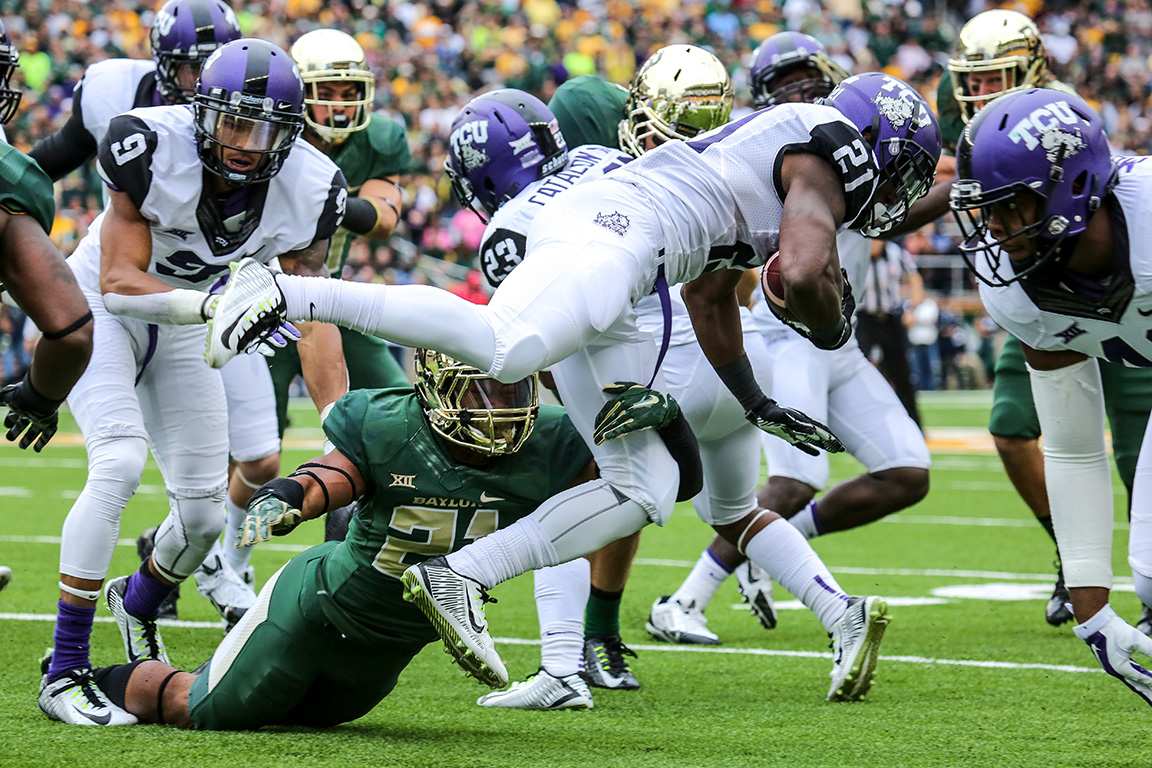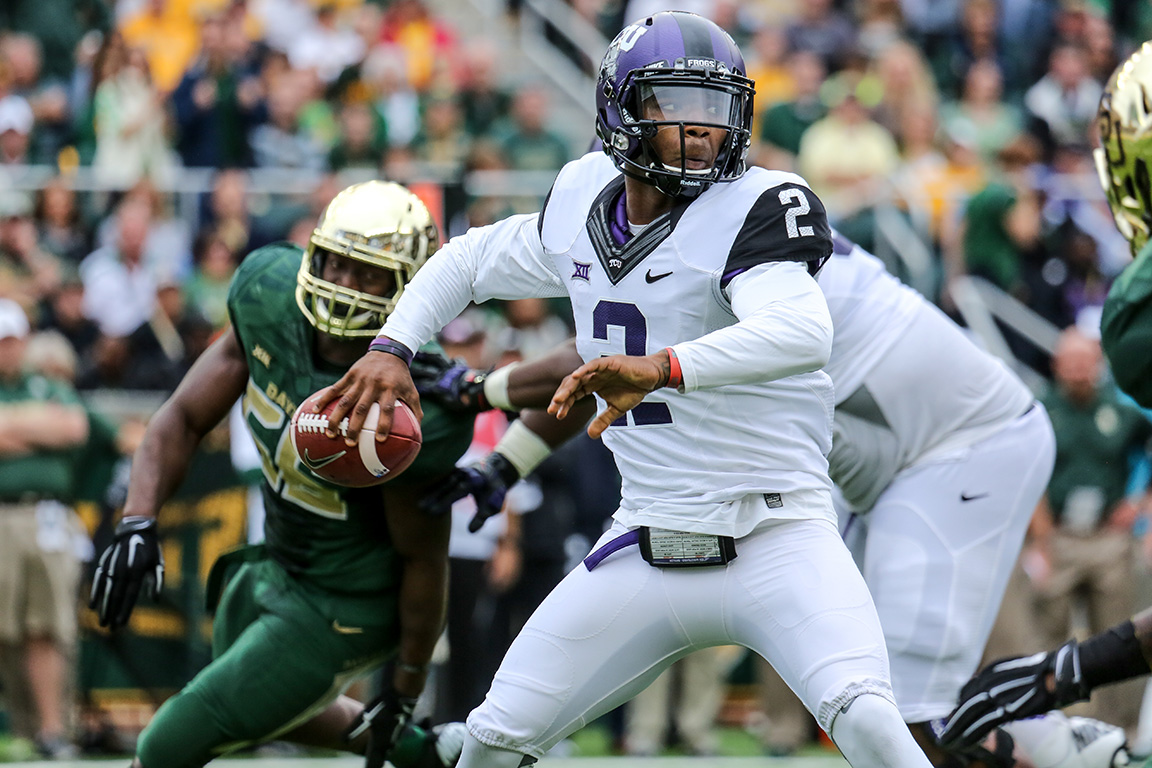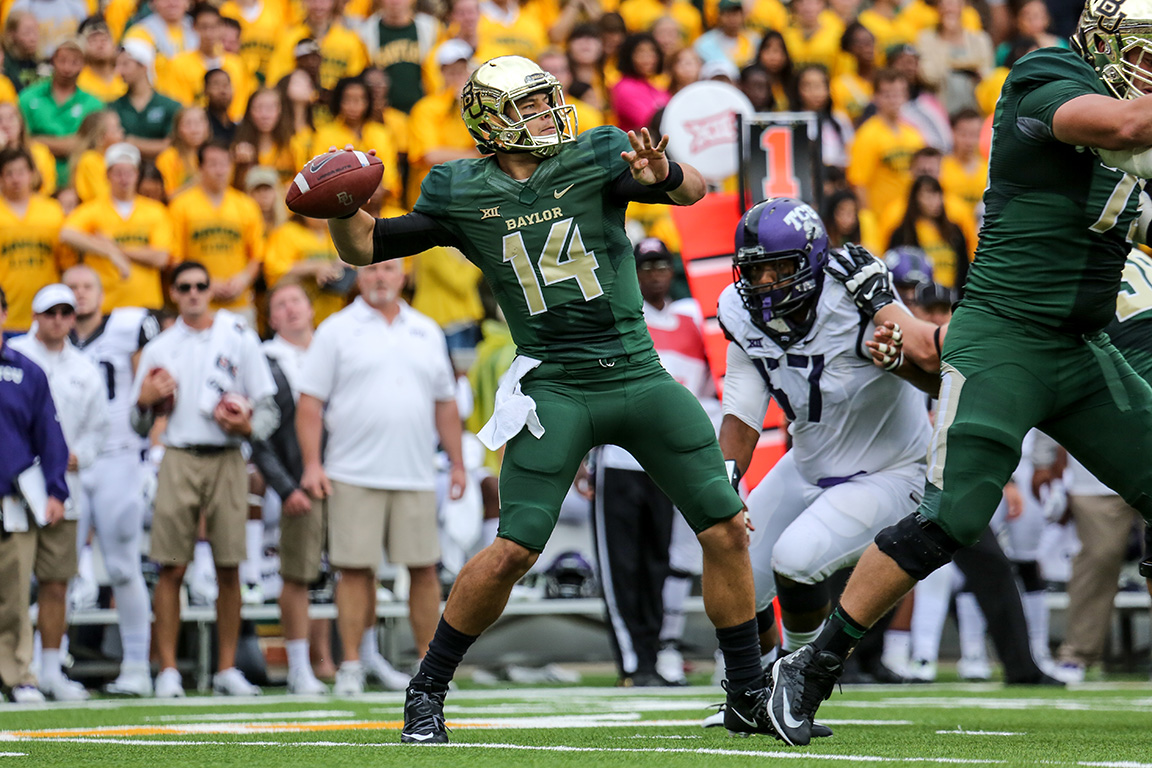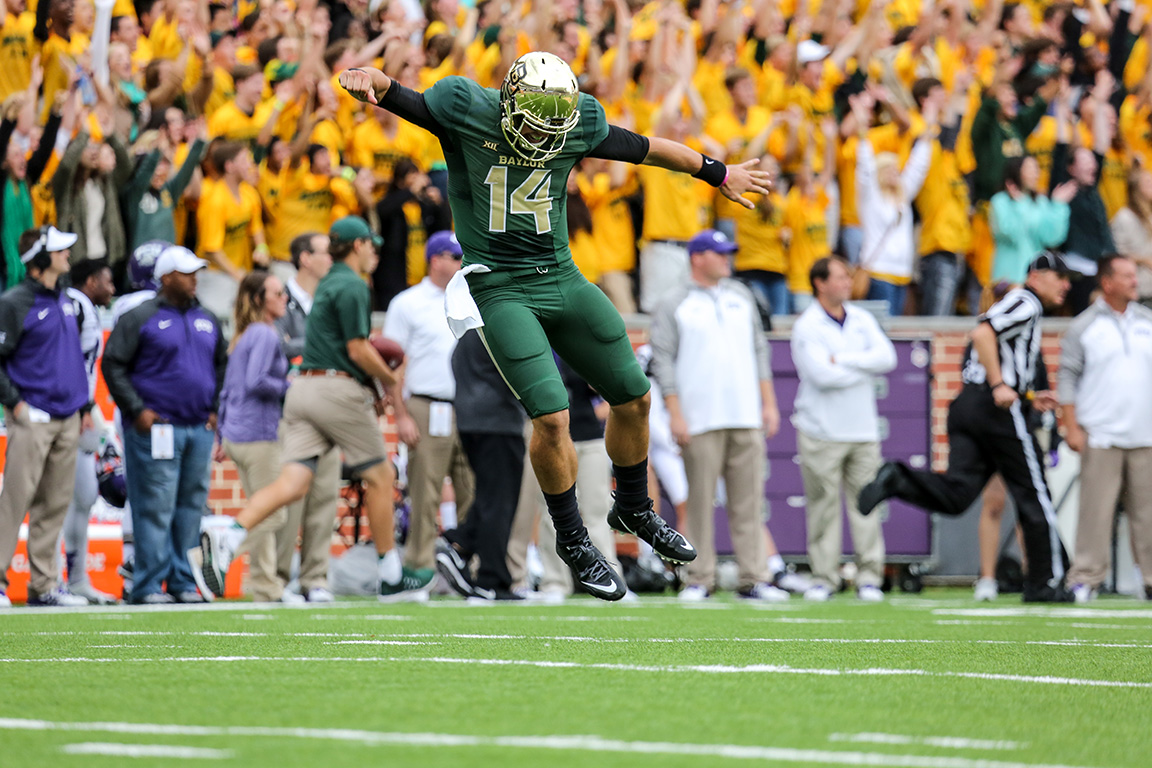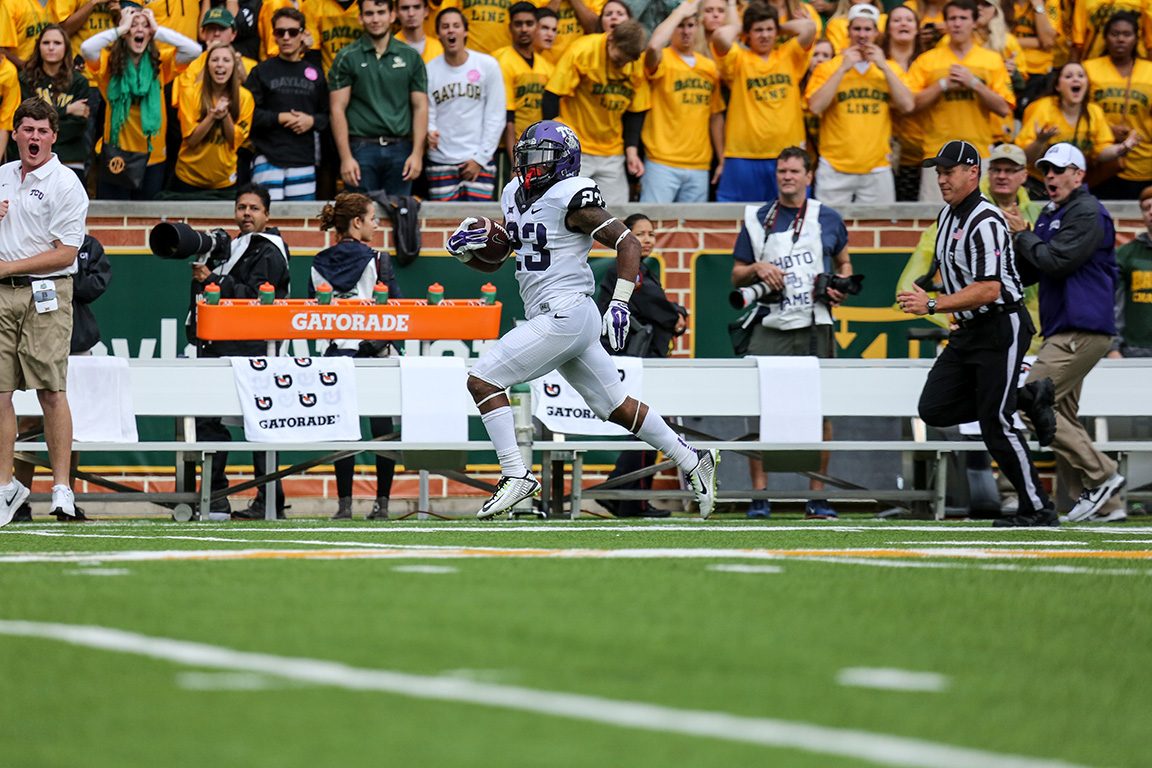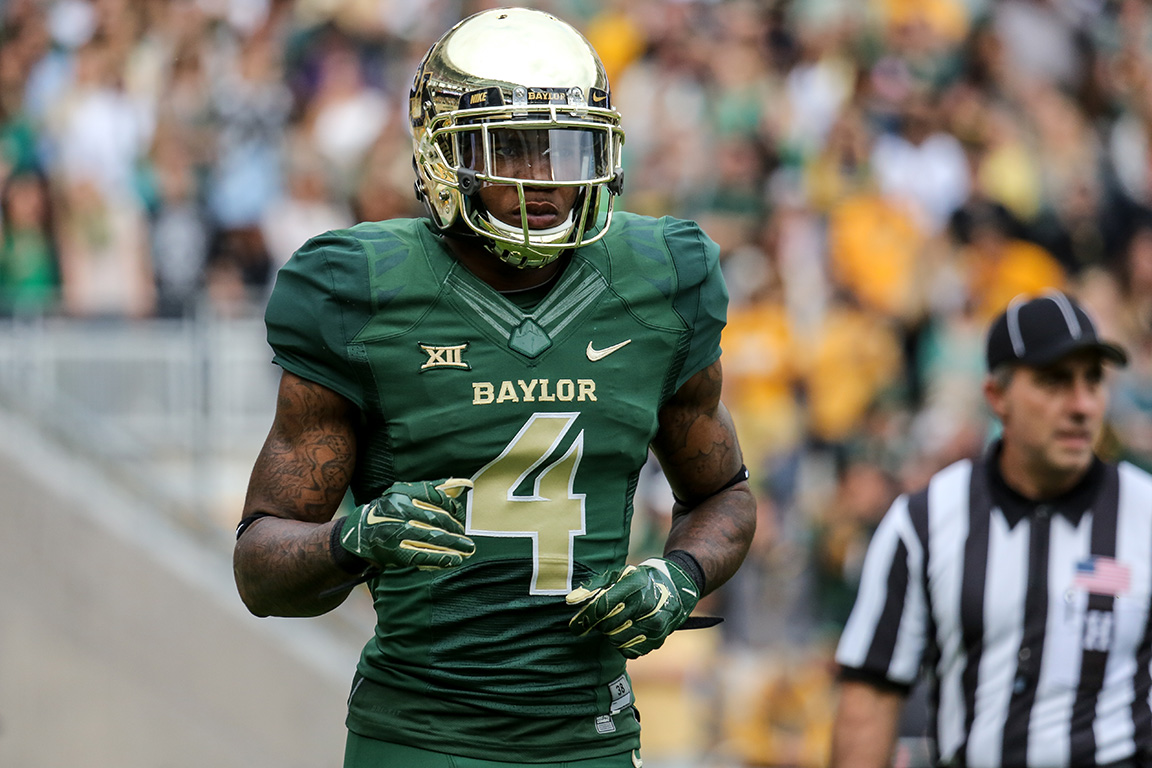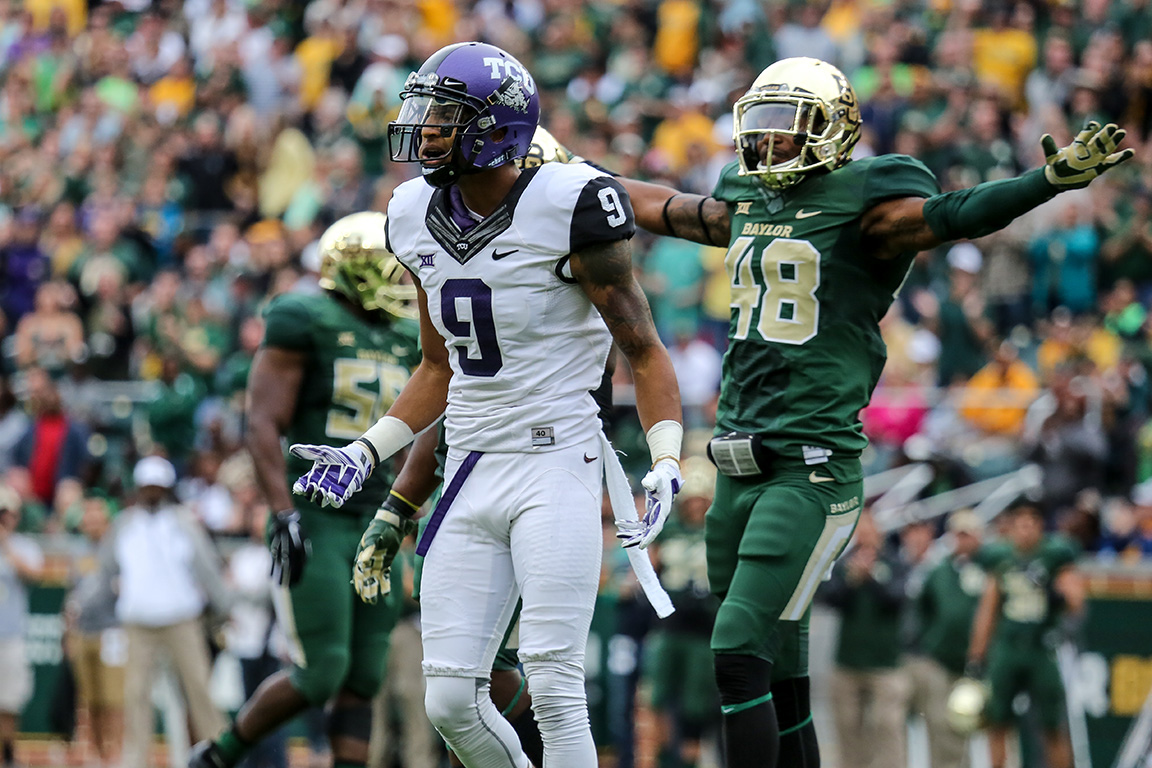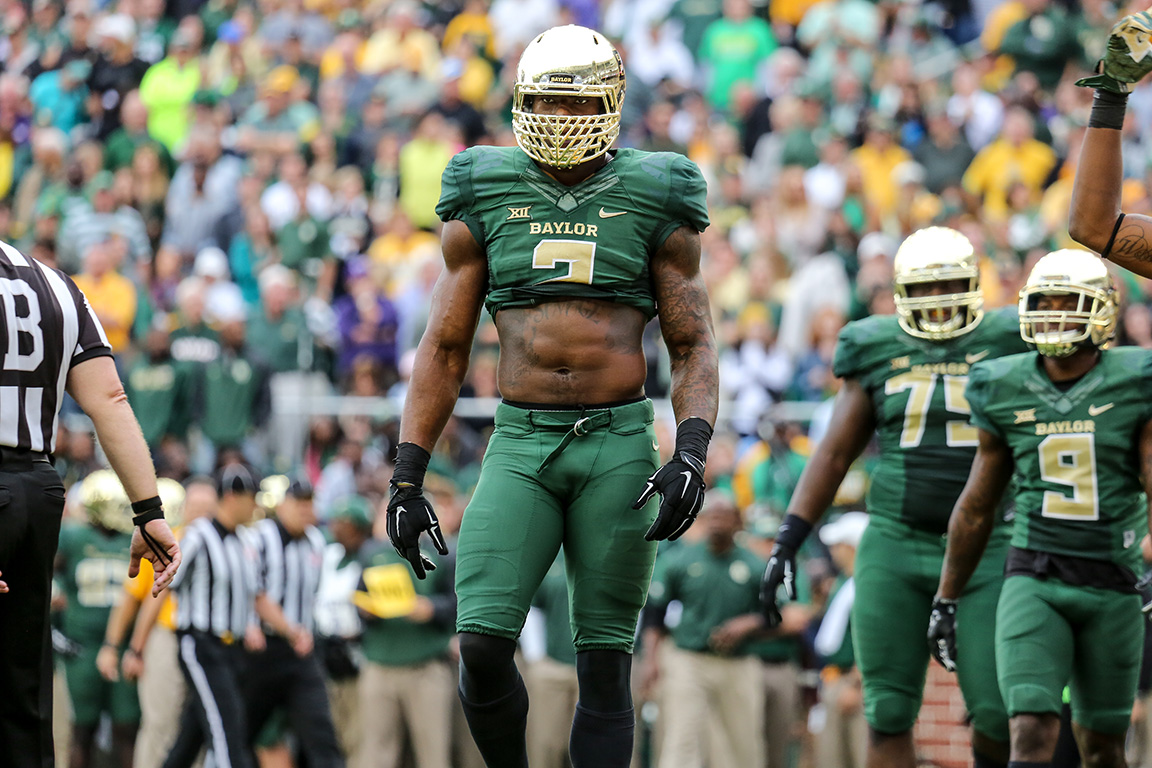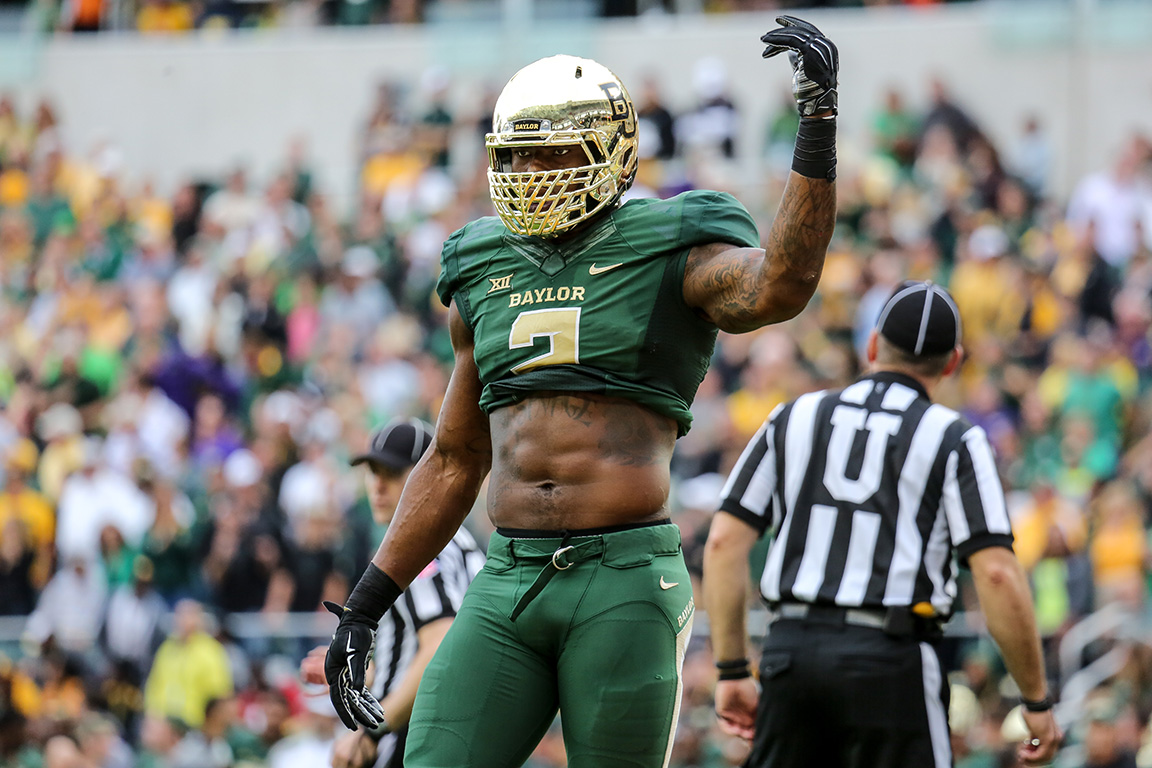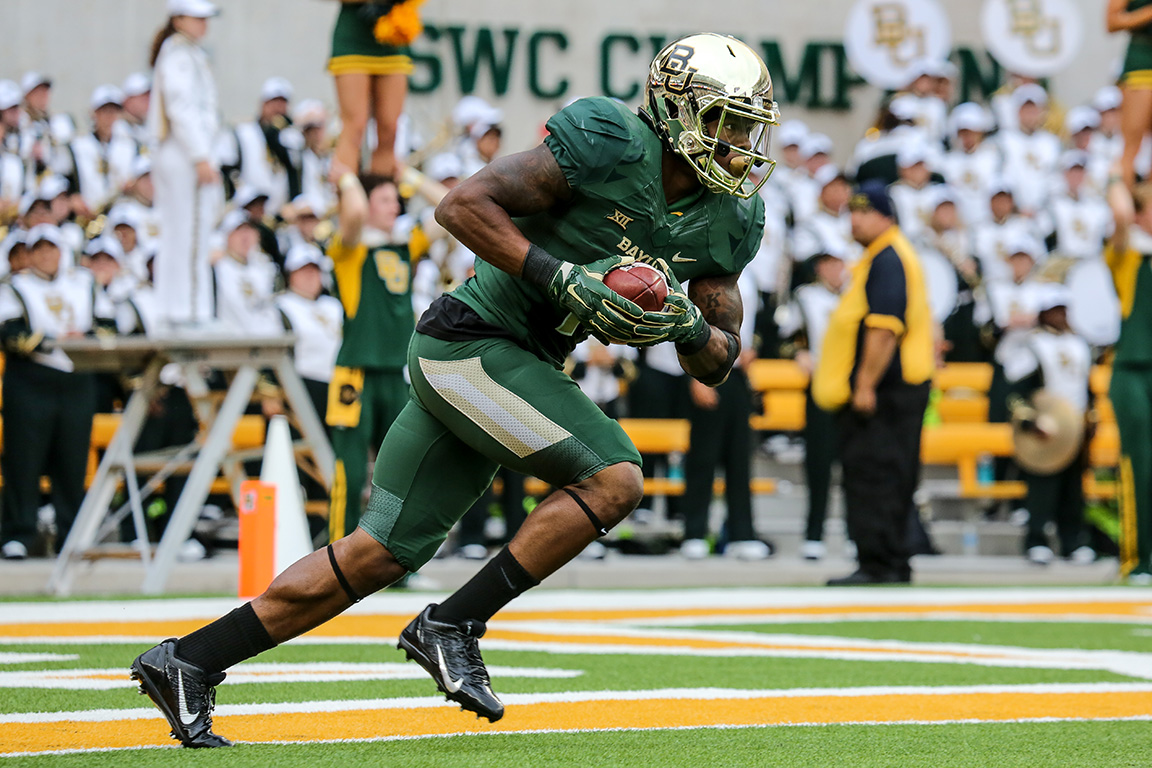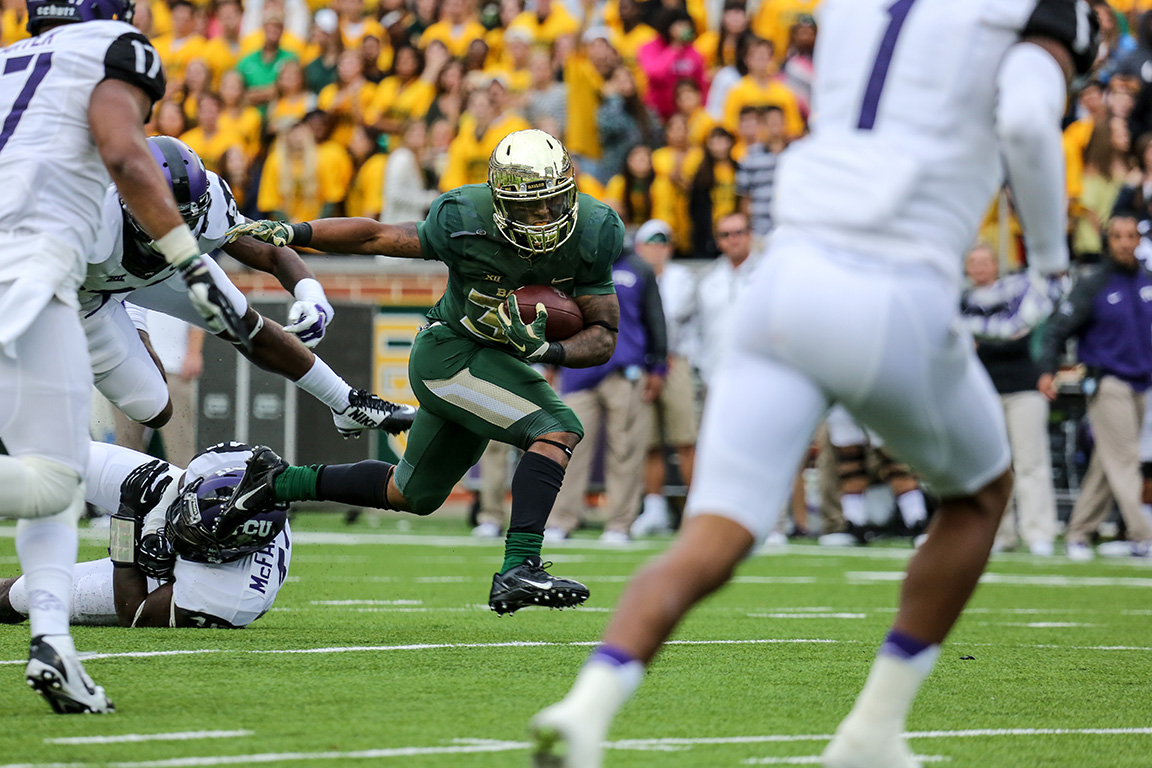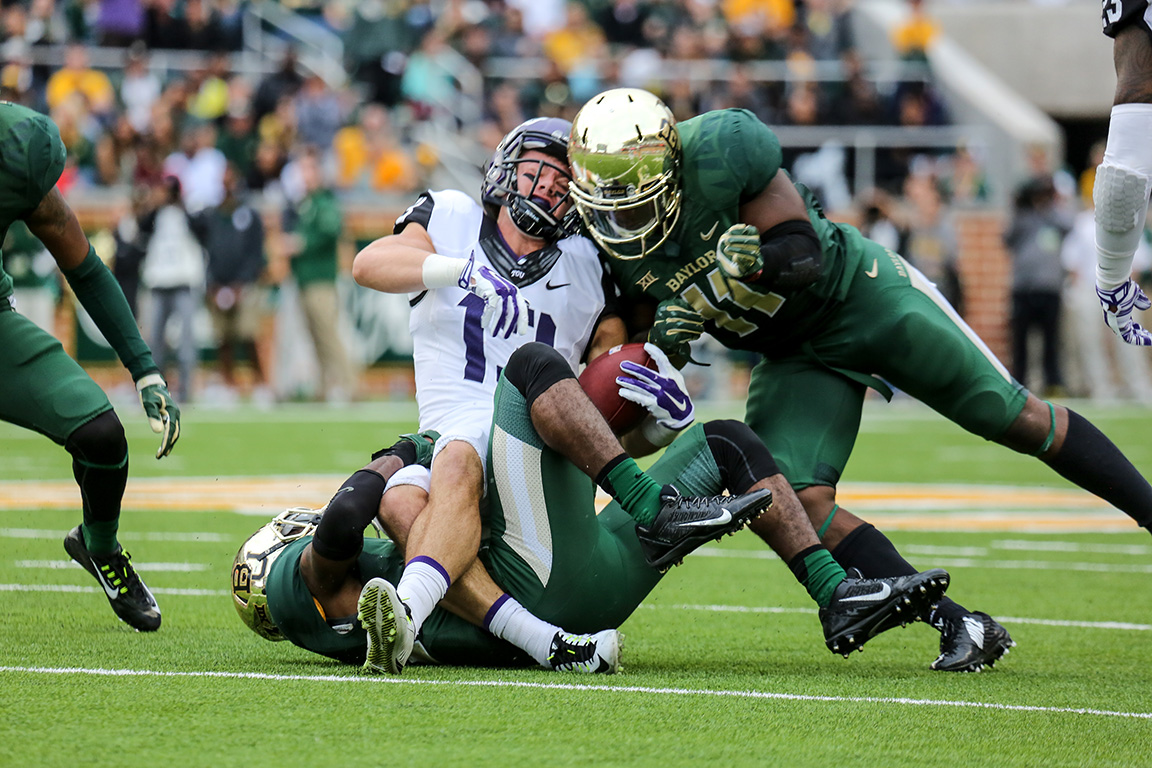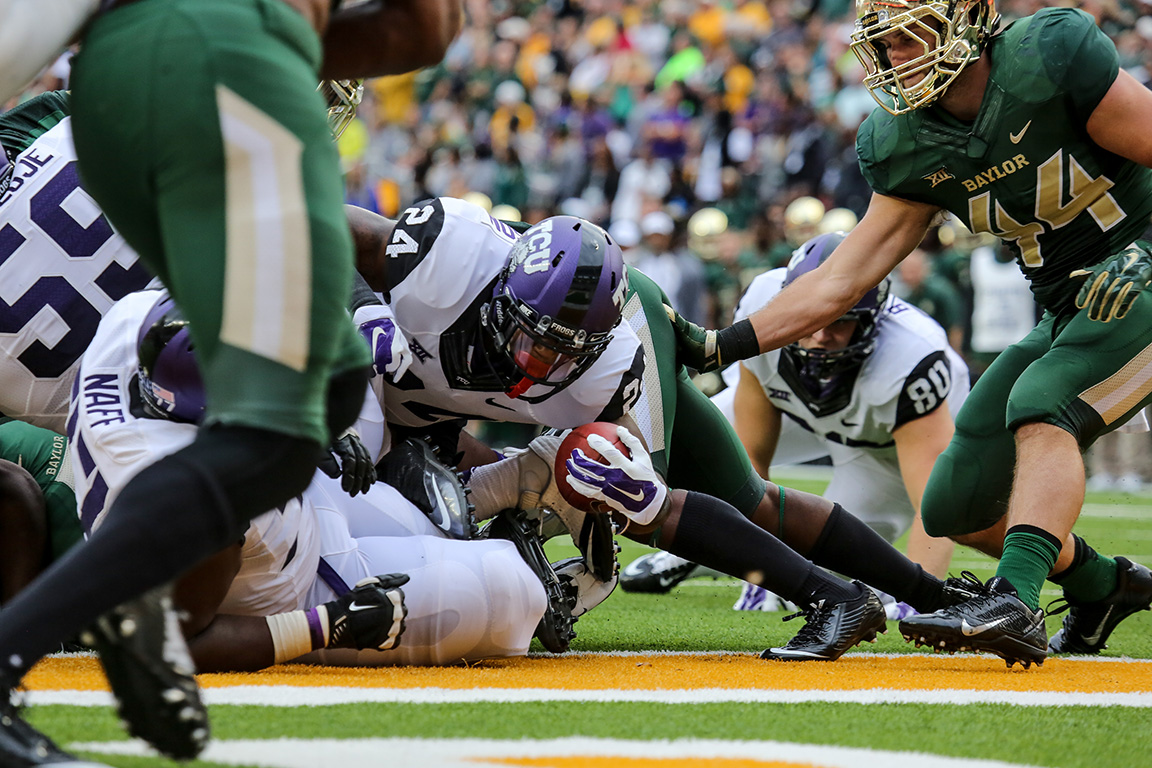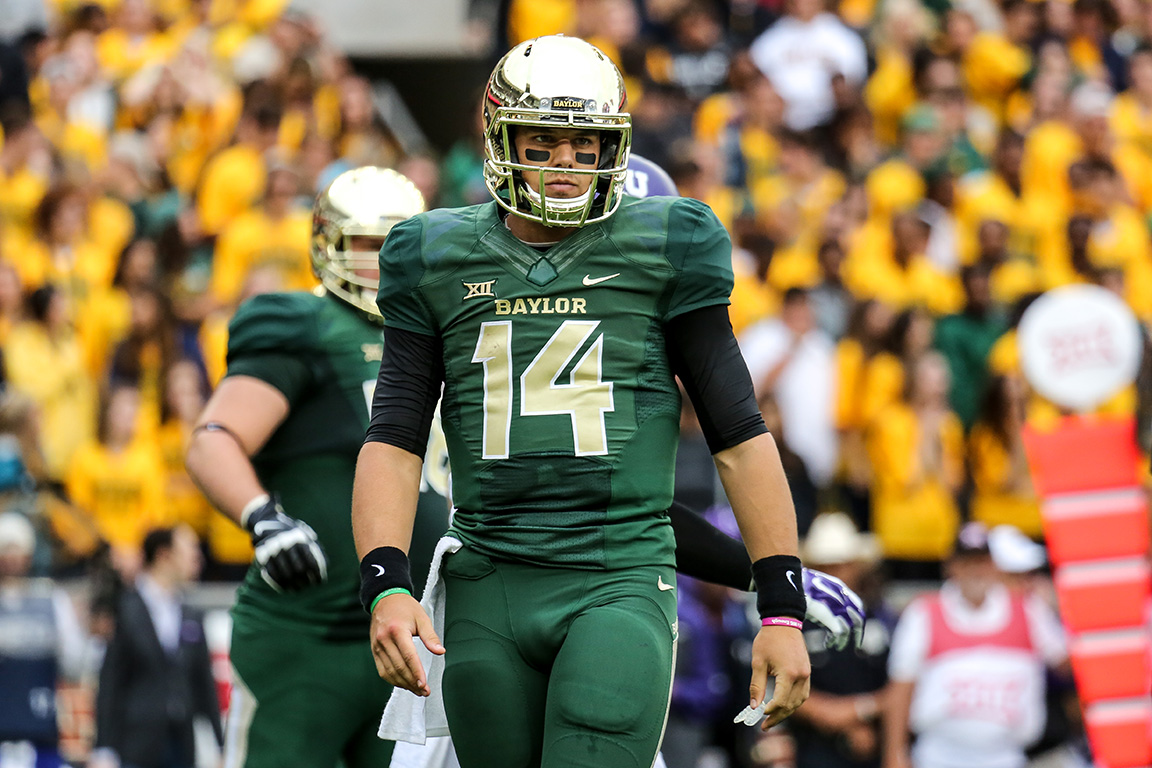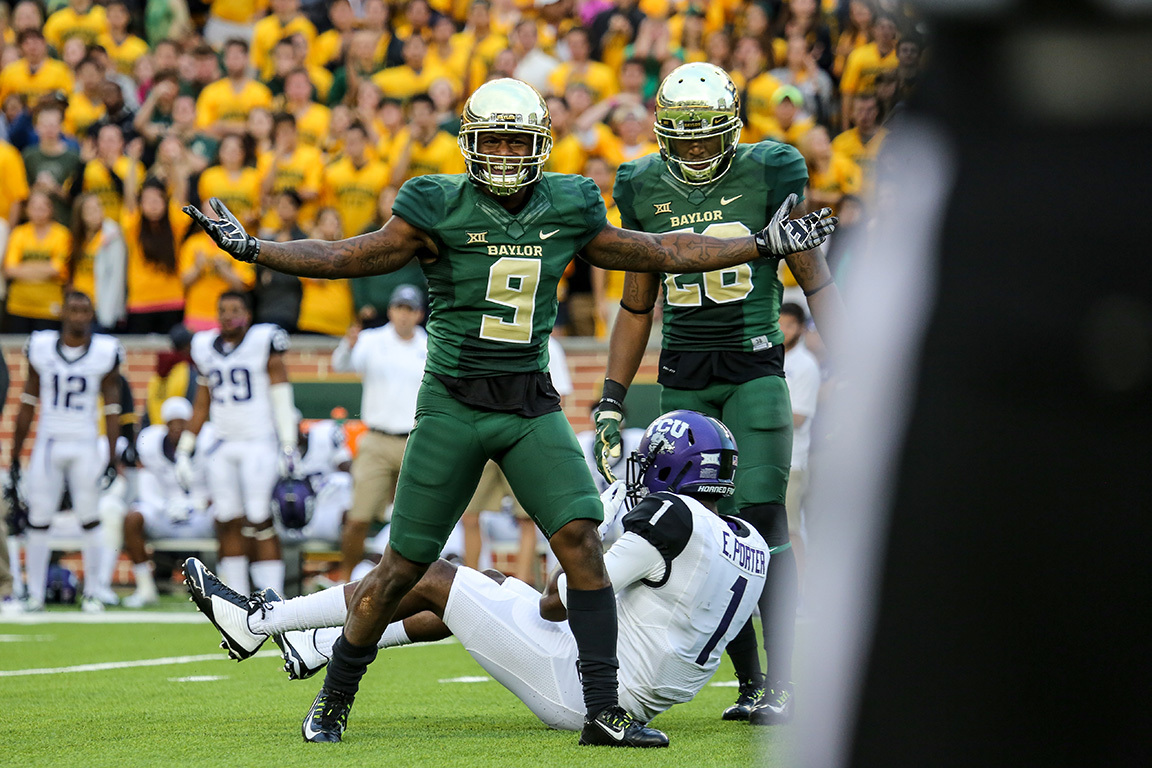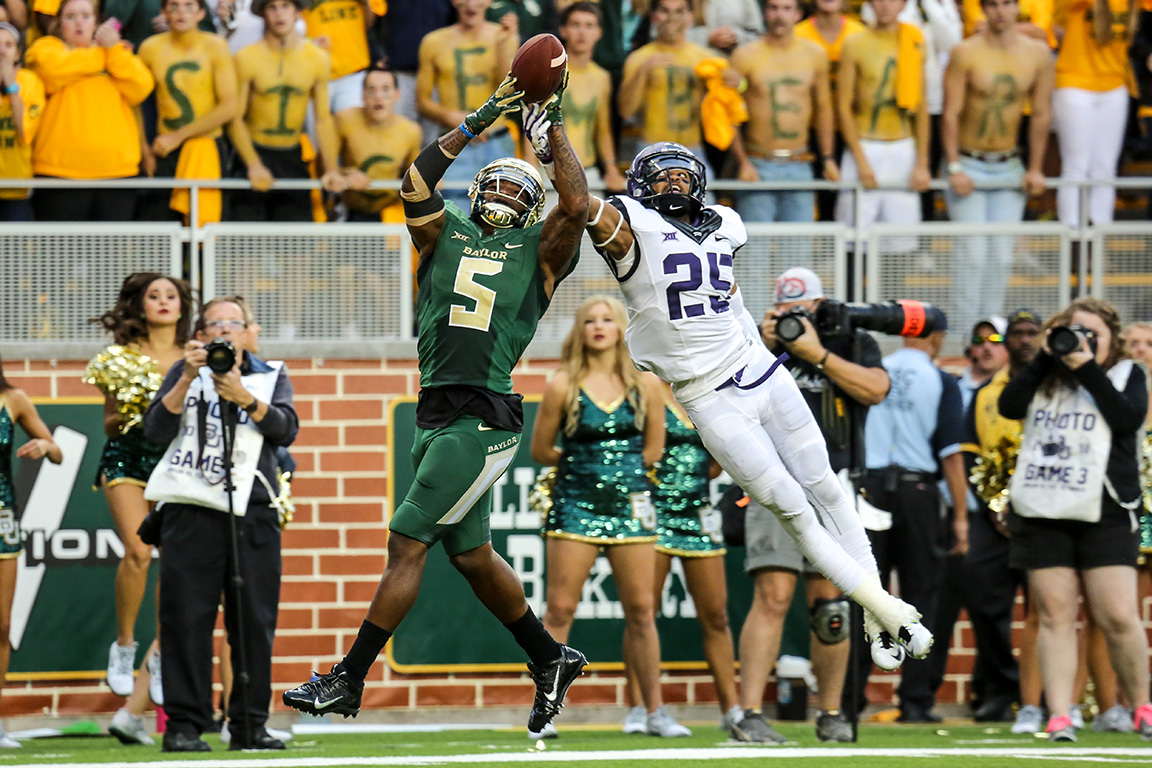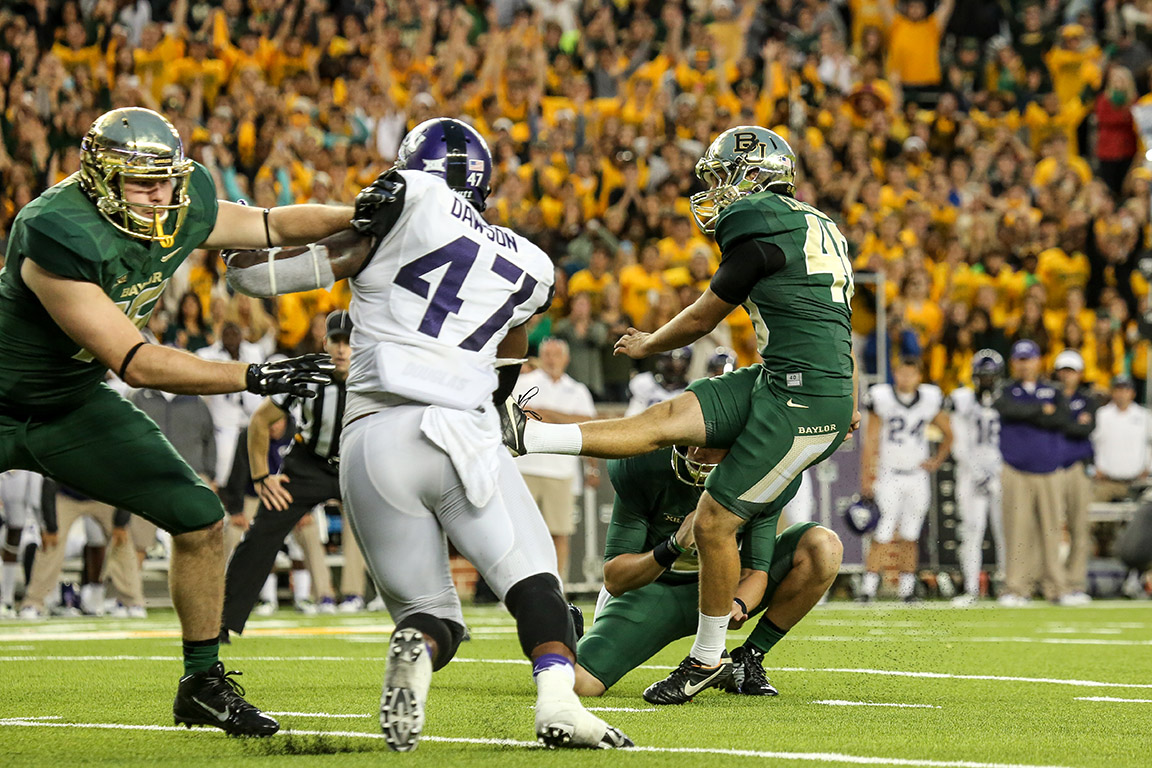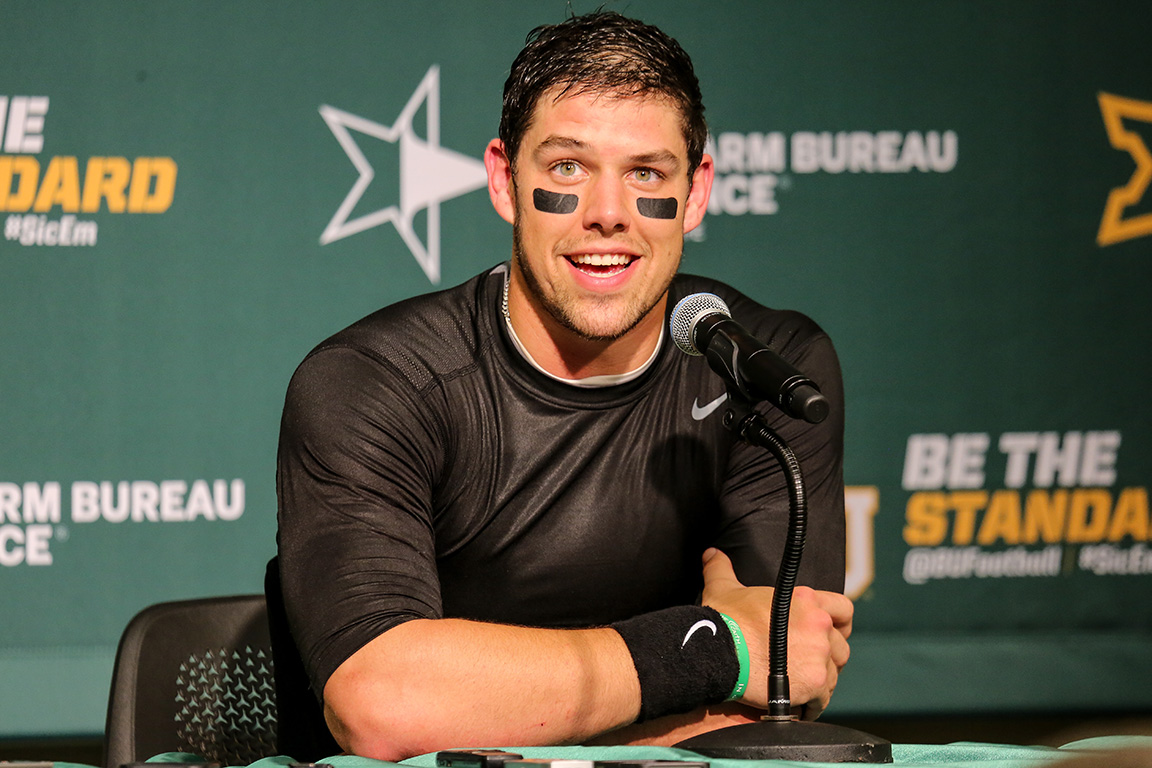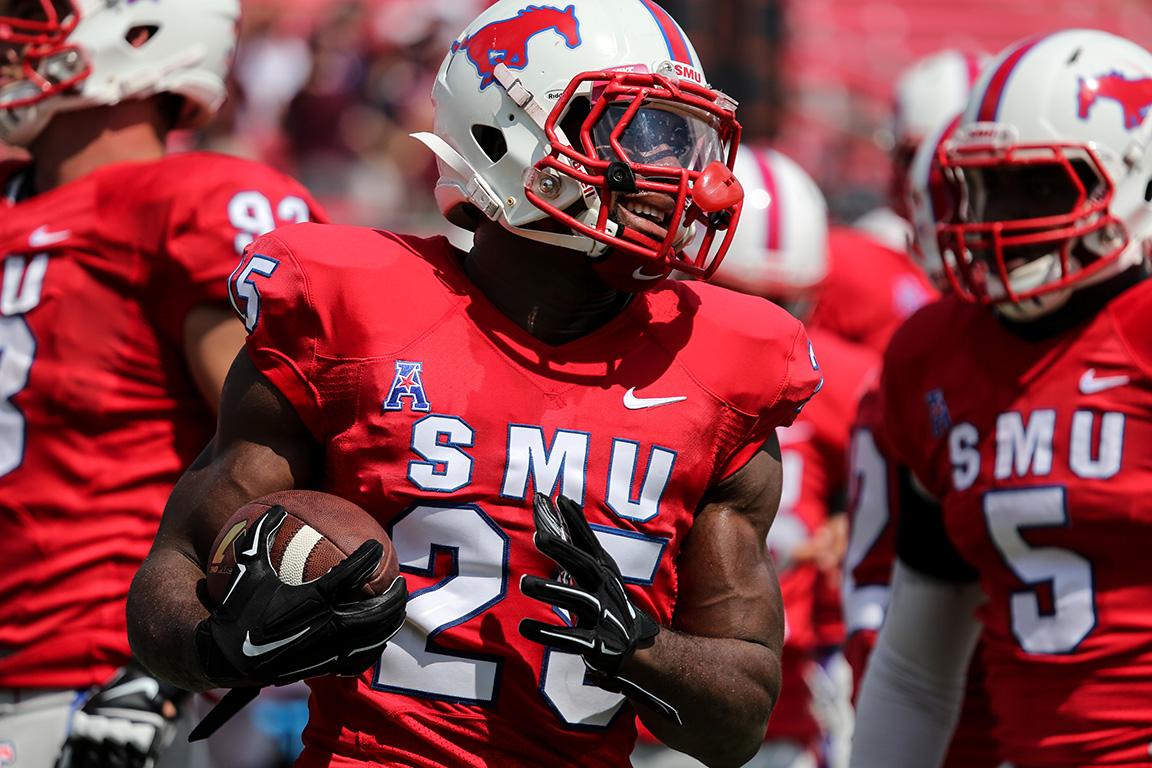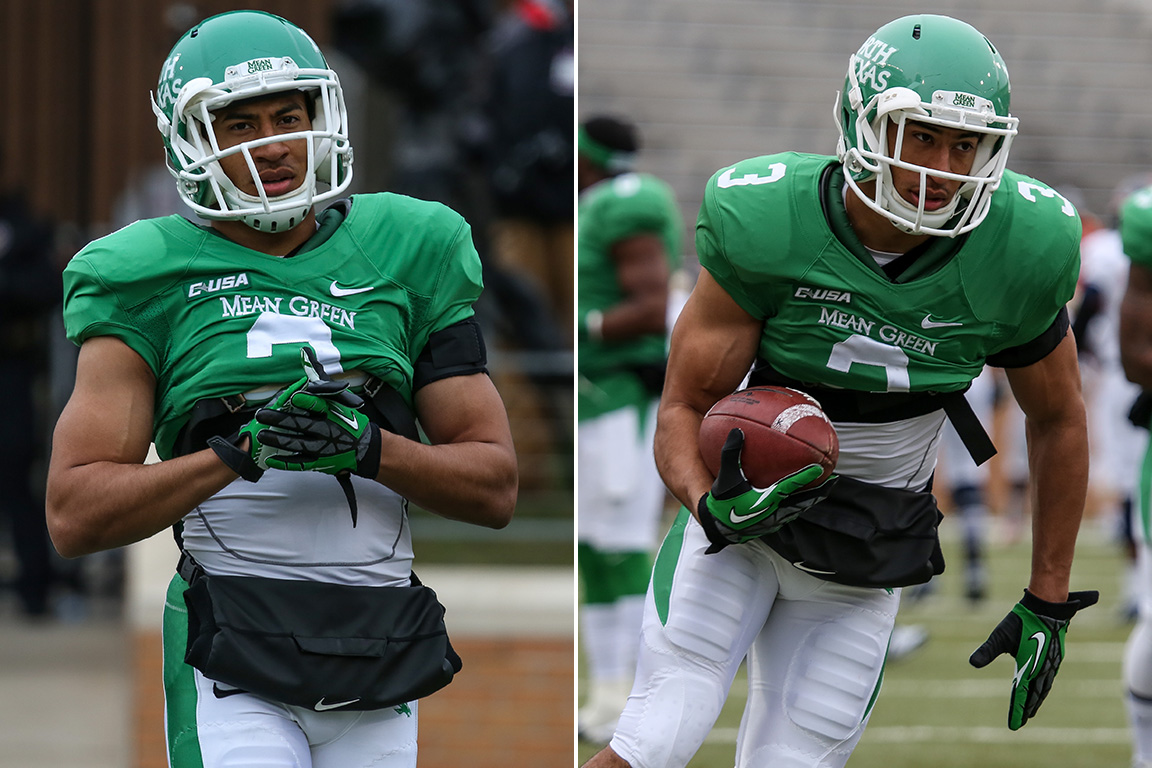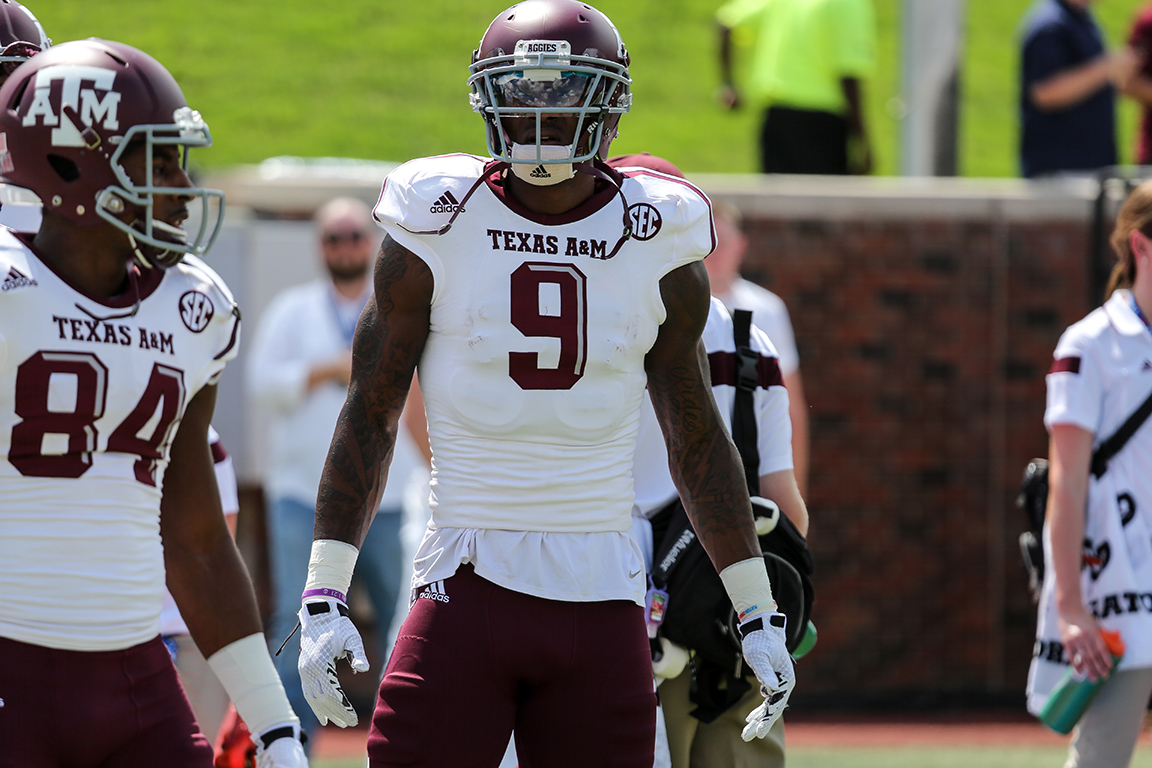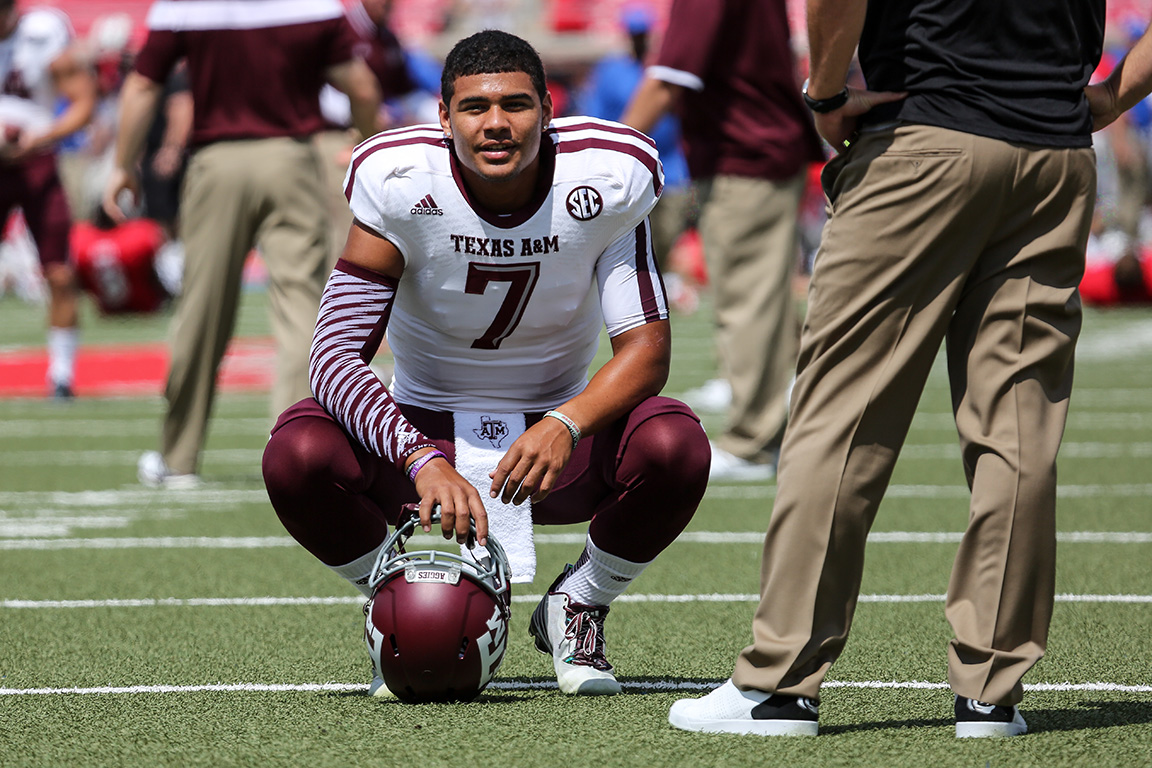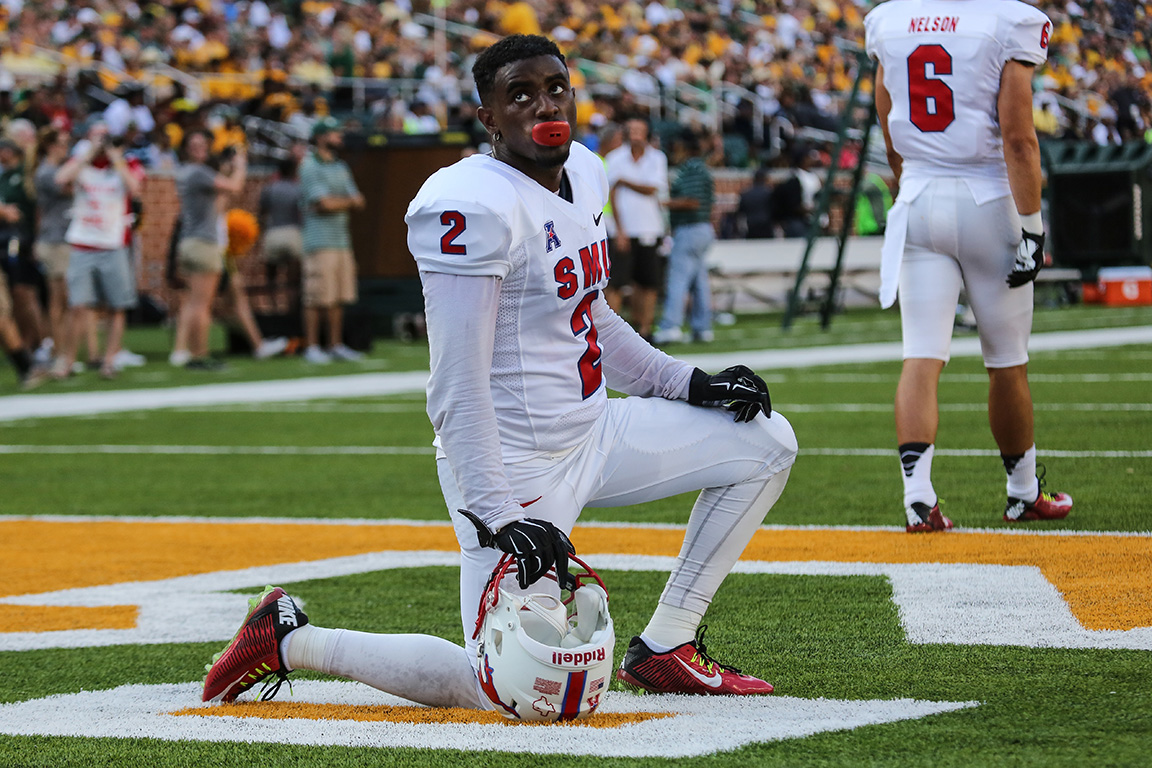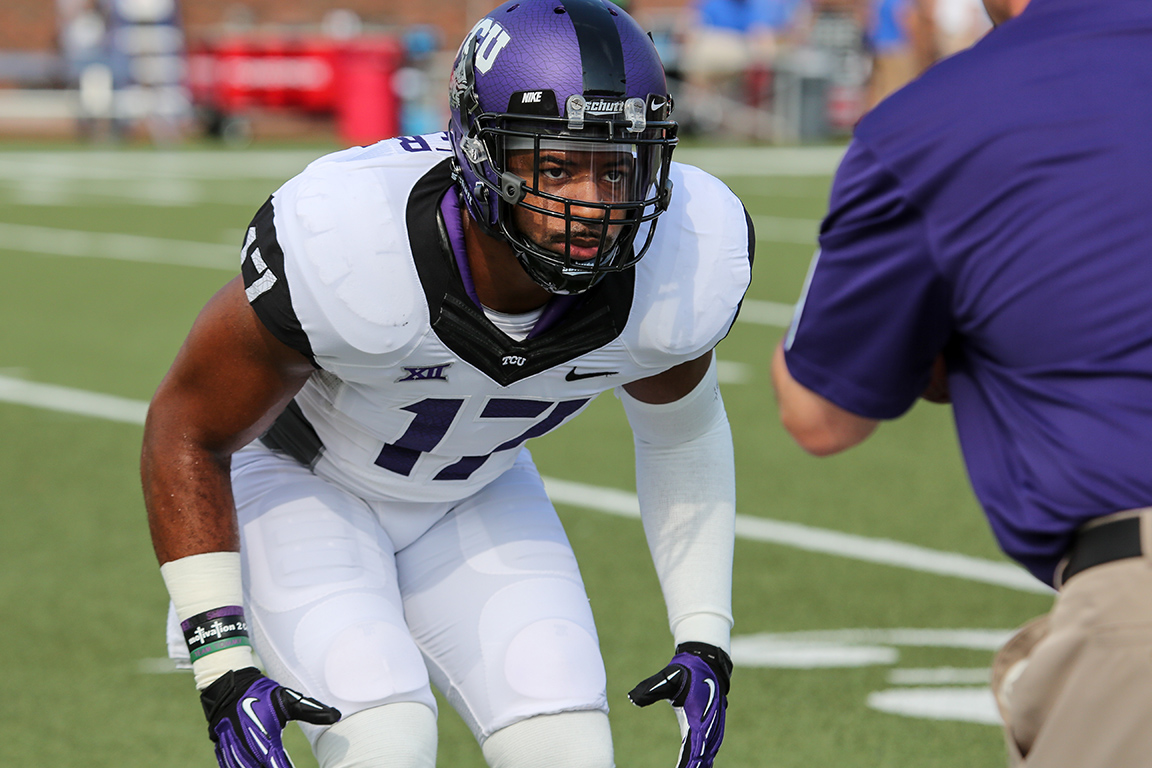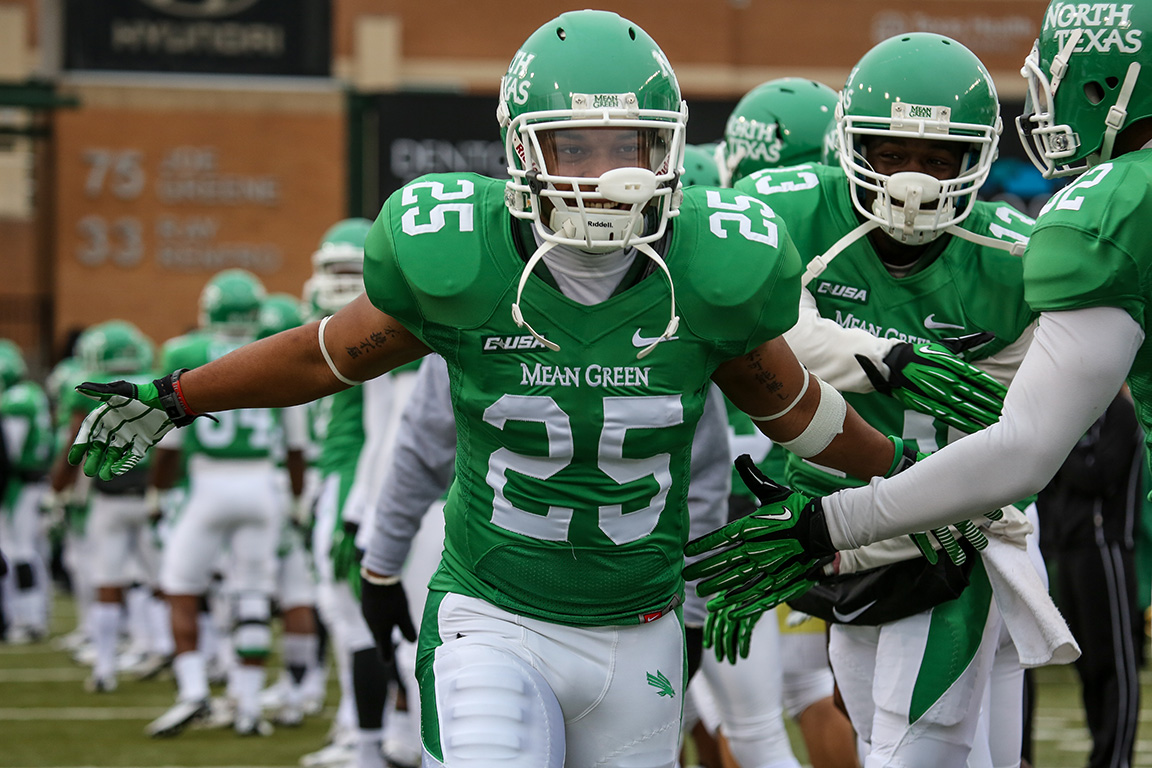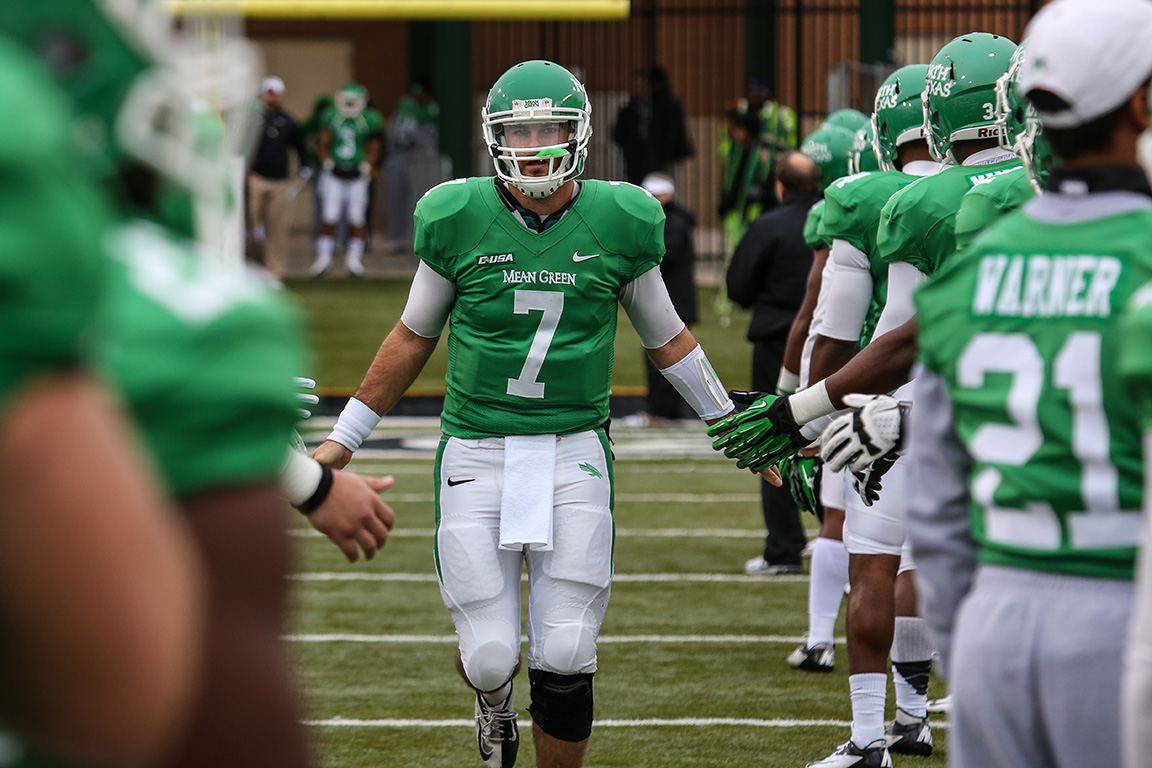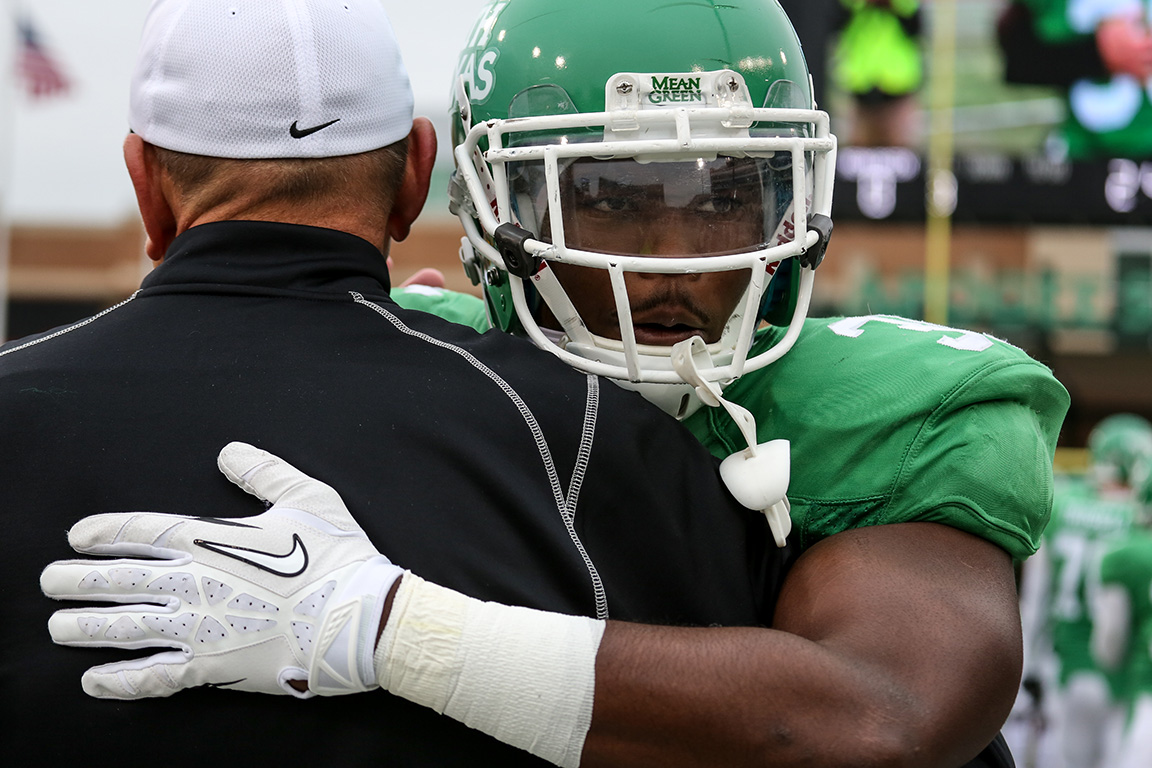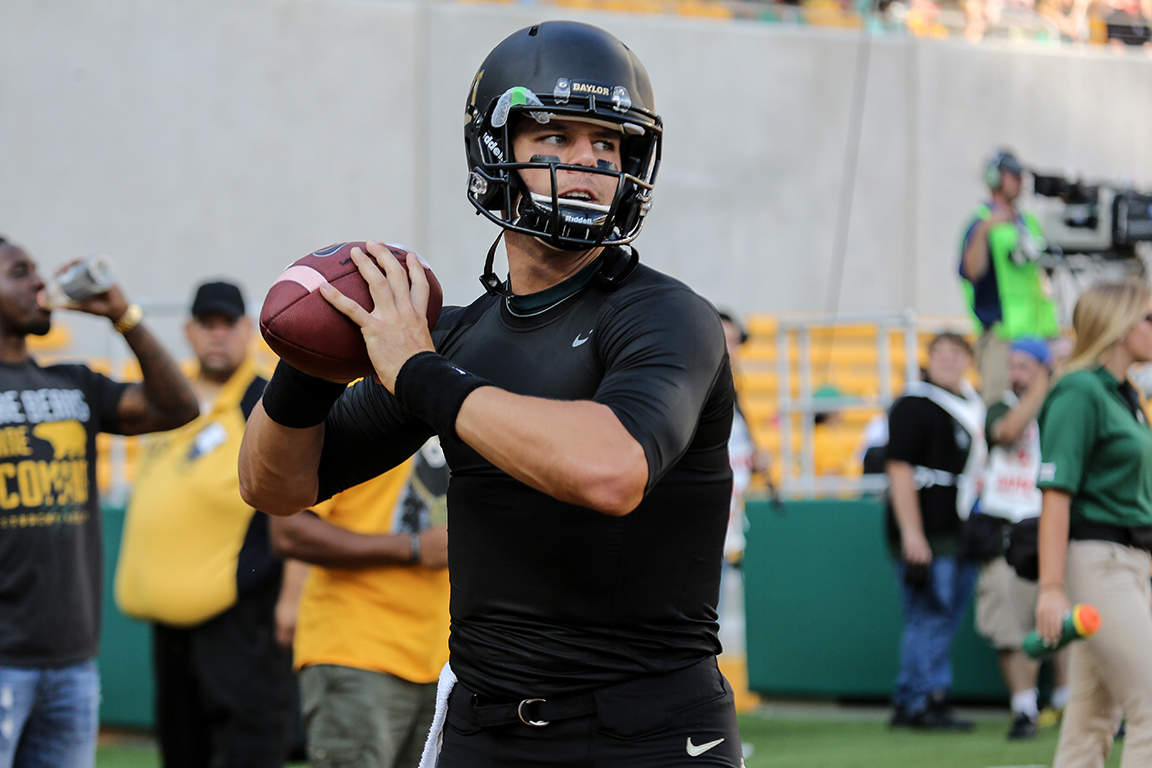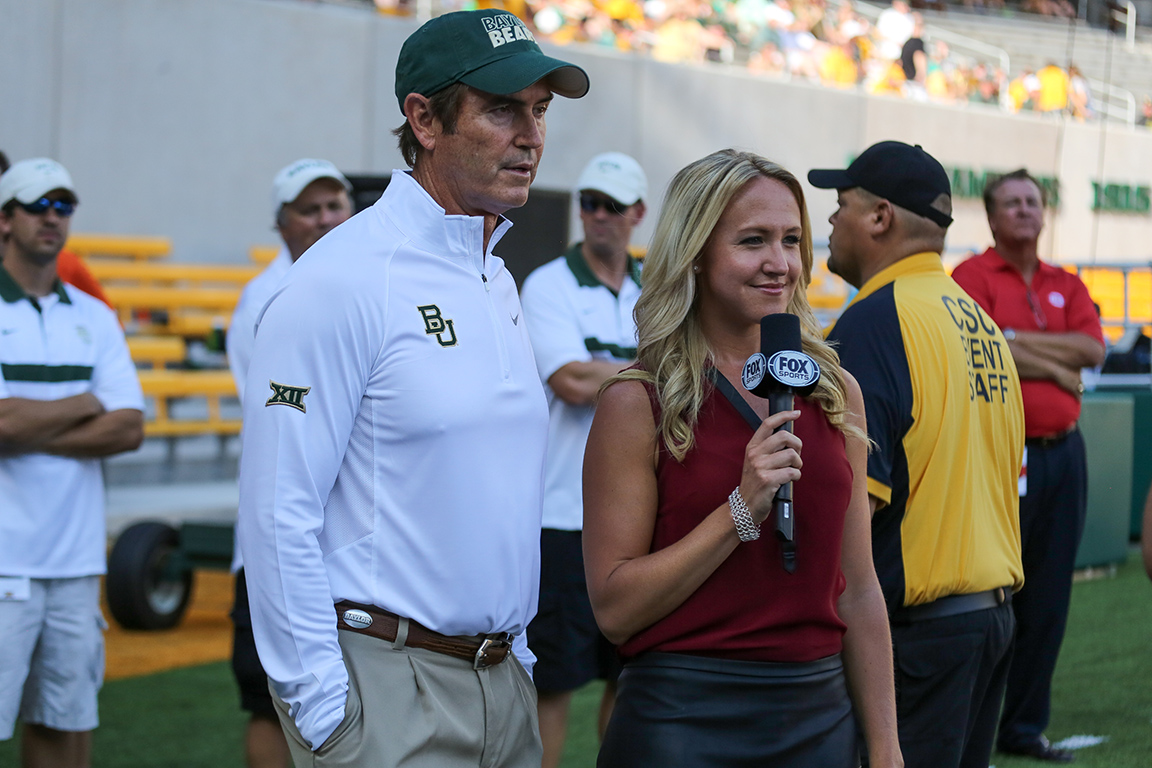I've only been shooting football for a little less than a year now, and in that short time I haven't really shot in typical college football environments. The first two schools I had photo credentials for last year were the SMU Mustangs and North Texas Mean Green--not exactly the premier teams of the FBS. This season, though, I've been fortunate enough to be credentialed for SMU and North Texas again as well as TCU and Baylor.
When TCU and Baylor played each other down in Waco, TX I finally had an opportunity to experience a legitimate college football atmosphere, and it was a lot to take in. Not only was I one of about 150 photographers on the sidelines but ESPN was in town broadcasting the game to the country and ESPN will do whatever it takes to get their shots even if that means squatting right in front of your camera.
Aside from sideline distractions, this game was a fast-paced shootout. And considering some advice I've received when shooting football about staying in front of a good team and behind a bad one, I had to hustle end zone to end zone considering these were both great offensive teams. It was tiring, but I was able to capture a wide variety of shots for both teams--one of my goals for each game.
At one point in the game, though, it seemed as if TCU was going to leave victorious considering they were up by 21 points with six minutes left in the game, but I should've known better since Baylor has such an explosive offensive and a Heisman-caliber quarterback in Bryce Petty.
This is where my inexperience in shooting big-time college football hurt me. As Baylor began its 21-point rally to tie the game it felt impossible to keep up with the team. Even though I was staying in front of the them, they scored so quickly and usually on the opposite side of the field so it caused me to miss out on good storytelling photos.
On the final drive the Baylor Bears worked themselves into field goal range for a game-winning kick. Finding a place to shoot a good field goal/kicker shot is something I'm still figuring out. My thought process was to get in the corner of the end zone and capture a photo of the kick then the celebration or disappointment afterward, but with the noise from the crowd and the intensity of the moment I got too caught up in the situation. I captured a shot of the kick, but I couldn't help but look to see if he made it. In that time I looked up and watched the ball sail through the up-rights and finally looked back at the kicker it was pure chaos on the field. The Baylor players flooded the field and then moments later the students were rushing the field.
I'm learning that sports photography is not only about predicting what's going to happen next, but you also have to be able to make quick decisions about where to be and what to shoot because if you don't you'll end missing a great shot.

